ISEV Member Spotlights
Each month, ISEV features one or more members in the ISEV Member Spotlight! Check out this month's featured member(s) plus all of the wonderful ISEV members featured in the past. Interested in having the spotlight put on YOU? Email us at [email protected].
2024
JULY | APRIL | JANUARY
2023
DECEMBER | NOVEMBER | OCTOBER | SEPTEMBER | AUGUST | JULY | APRIL | MARCH | FEBRUARY | JANUARY
2022
DECEMBER | NOVEMBER | OCTOBER | SEPTEMBER | AUGUST | JULY | JUNE | MAY | APRIL | MARCH | FEBRUARY | JANUARY
July 2024 Member Spotlight
Marley Dewey
 Tell us a little about your EV research, what attracted you to this field and what are the biggest obstacles to your EV research? What are your thoughts on how ISEV might help to address any challenges? Progress? Tell us a little about your EV research, what attracted you to this field and what are the biggest obstacles to your EV research? What are your thoughts on how ISEV might help to address any challenges? Progress?
My laboratory researches the combination of biomaterials with extracellular vesicles, specifically matrix-bound nanovesicles (MBV). MBV are found residing in the extracellular matrix (ECM) throughout the human body, and can be isolated from other living species with a matrix (biofilms, other mammals, marine invertebrates, others). We use biomaterials with MBV (and other EV) to control EV release and better mimic the components and 3D structure of natural ECM to study bone cancer, build better biomaterials for bone regeneration, prevent infection of biomaterials, and regrow coral reefs. I was attracted to this field during my postdoc in the Badylak/Hussey Laboratory (UPitt) where they first discovered MBV residing in decellularized ECM. MBV immediately fascinated me as a tissue engineer trying to mimic the native ECM to improve regeneration, and how little we knew about these EV. The biggest obstacles to my EV research have been defining MBV in the field of extracellular vesicles- as a new type of EV there are many unanswered questions and unknowns, and many people have still yet to hear about them! ISEV has already been instrumental in the information I've gained about EV (as a relatively new PI to this field) and connections made with EV experts in the community to raise awareness of MBV and form collaborations on how to answer these unknown questions.
What more do you think ISEV could support the global network of EV researchers?
I think ISEV has already done a fantastic job- I was extremely impressed with the most recent (and first for me) ISEV conference I attended (Australia, 2024). The education day at the conference, the EV clubs, MISEV guidelines, and workshops are all extremely helpful resources for myself and my students. My suggestion would be raising awareness of this community to other related communities that may be interested- I find that some of the other conferences I attend (TERMIS, BMES) have some talks on EV but attendees could be made more aware of ISEV and the resources there.
Do you plan to continue with EV research in the future and if so, what questions would you like to pursue?
Of course! EV are so interesting and important in the kinds of work my lab is doing. The major questions I'm hoping to pursue are ones fundamentally related to MBV, such as how and why these embed in the ECM and understanding MBV biogenesis pathways. Additionally, exploring what kinds of MBV (tissue, cells) are best for regenerative medicine purposes.
Who influenced/motivated you to pursue this direction of your career?
I'd like to thank all of the mentors I've had along the way, both my advisors and my peers for influencing my decision to lead my own laboratory. Especially my graduate mentor (Brendan Harley, UIUC) who has provided me with advice and experience every step of the way. Having experienced both bioengineering industry and academia projects, these opportunities additionally helped me to shape my decision to become a professor by determining what I liked/didn't like in a career.
What is an innovative angle to your research?
I believe the innovative angle of my laboratory is our cross-disciplinary approach to EV applications in regenerative medicine by combining and engineering biomaterials with a diverse array of EV. As most EV work focuses on liquid-derived EV, we also set ourselves apart by studying the EV embedded in the tissues (MBV).
Name three things you like to do outside of work?
I'm a competitive swimmer and swim on a US Masters team almost every day outside of work! I also love arts and crafts (painting, crocheting, drawing) and hiking.
If you weren’t a researcher / physician, what other career do you think you might have had?
I think I would have considered a career in scientific graphic design and illustration. I love art and the intersection it has in science and considered dedicating an entire career to this!
What is your favourite vacation spot?
Acadia, Maine (USA)! I'm originally from Maine and love to get back every year and hike, see friends, and spend time with my family. It has mountains, oceans and lakes, and scenic bike paths through forests that I'd highly recommend.
What is one thing you do that annoys your family or friends?
"Existing" (according to my little brother)
What is something that most people don’t know about you?
I was named after Bob Marley (the Reggae singer).
Describe your feelings/thoughts in a phase when your experiments were failing?
Frustration! But I've come to understand that with all new experiments (and even some I've done many times) there will be failure, but with time I have gained an appreciation for troubleshooting. Science isn't easy, but when a failed experiment eventually goes right due to effective troubleshooting it's usually more satisfying than having worked on the first try.
How do you feel about one of your images featuring on the new cover for JExBio?
I'm extremely excited and grateful! As a new PI and one just getting involved in ISEV this helps spread awareness of the research in my lab and MBV!
April 2024 Member Spotlight
Qing-Ling Fu
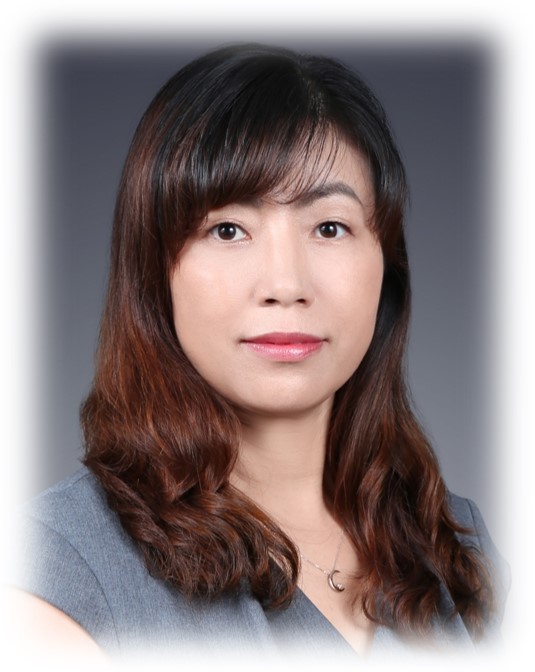 Tell us a little about your EV research, what attracted you to this field and any obstacles to progress? Tell us a little about your EV research, what attracted you to this field and any obstacles to progress?
My previous research interests focused on the immunomodulatory effects of mesenchymal stem cells (MSCs) in allergic airway inflammation. There is much evidence to show that MSCs exert immunomodulation via their exosomes or other small extracellular vesicles (sEVs). Exosomes or other sEVs released by MSCs possess striking advantages over whole-cell therapy, such as low immunogenicity, capability to pass physiological barriers especially the brain-blood barrier, convenient storage and high biosafety. Thus, MSC exosomes and other sEVs have been identified as extremely promising cell-free therapeutic agents for some diseases.
Currently, we have developed a standardized scalable protocol for the isolation of MSC-sEVs, and identified effects of MSC-sEVs on allergic airway inflammation, neurological disorders including spinal cord injury, cerebral ischemia, amyotrophic lateral sclerosis, Alzheimer’s and Parkinson’s disease. We have been continuously improving the use of clinical grade good manufacturing practices (GMP)-based MSC-sEVs. As well as working on the translation or clinical application of MSC-sEVs.
The main obstacles to progress are the production of batch-stable and scalable sEV preparations, clear biological mechanisms and ensuring relevant regulatory affairs adherence.
Why did you join ISEV and what are your thoughts on how ISEV might help you to address any challenges?
Reply: ISEV is the largest community of extracellular vesicle researchers in the world, and is the leading professional society for researchers and scientists involved in the study of EVs. I am a board member of the Chinese Society of Extracellular Vesicles (CSEV). We have had a number of joint meetings between CSEV and ISEV in the last few years. ISEV has provided an effective platform for us to communicate with established experts involved in the study of EVs from around the world. We hope that ISEV will help us to promote the clinical translation of EV research, for example, by providing guidance or suggestions relating to the regulatory, safety and efficacy aspects of EV translation including clinical trials.
In what way have collaborations with other groups and/or industry impacted on your EV studies?
There are four aspects:
(1) The Chinese Society of Extracellular Vesicles (CSEV) is the leading professional society for researchers and scientists involved in the study of EVs in China. I am a member of the CSEV Board, and the Chairman of the CSEV Rigor & Standardization special interest group: this has strengthened the clinical translation of my EV work. I am also a member of ISEV Regulatory Affairs and Clinical Use of EV-based Therapeutics Task Force. We hope that Interaction with ISEV is helping CSEV to discover EV-based therapeutic strategies and to apply them clinically in China.
(2) I developed standardized scalable protocols for the isolation of mesenchymal stem/stromal cells (MSCs) derived sEVs including anion-exchange chromatography and tangential flow filtration combined with mixed mode chromatography, and have been continuously applying clinical grade good manufacturing practices (GMP)-based MSC-sEV production. Furthermore, we have prepared several engineered sEVs including MSC-sEVs for the overexpression of protective proteins such as brain-derived neurotrophic factor (BDNF), nicotinamide phosphoribosyltransferase (NAMPT) or the delivery of small interfering RNAs (siRNAs)/antisense oligonucleotides (ASOs) or miRNAs targeting genes involved in diseases.
(3) I identified the effects of MSC-sEVs or engineered sEVs on allergic airway inflammation including immune cells, such as T cells, dendritic cells, macrophages and group 2 innate lymphocyte cells. This led to my collaborating with the professors in several universities or hospitals to investigate the effects of MSC-sEVs or engineered sEVs on neurological disorders including spinal cord injury, cerebral ischemia, amyotrophic lateral sclerosis, Alzheimer’s and Parkinson’s disease, or premature ovarian failure, hearing loss, Crohn's disease, arthritis, kidney injury, liver injury or liver failure.
(4) Currently, I am collaborating with clinical experts to perform clinical trials for MSC-sEVs and exosomes in neurological diseases such as ALS, stroke and liver failure. The identification of the relevant regulatory guidance and their application to EVs as investigational new drugs (INDs) in clinical studies is a major goal, which also supports the safe and effective EV-based treatment concepts worldwide. This is what we should, will and are doing in collaboration with ISEV.
Do you plan to continue with EV research in the future and if so, what questions would you like to pursue?
Our future work will continue to increase the scale isolation of MSC-sEVs for industrial applications, and further to focus on clinical trials using MSC-sEVs, and preparing of engineering sEVs.
What do you think is the most exciting thing in the future of EVs?
Reply: We have truly observed the therapeutic effect of MSC-sEVs on some diseases. One day, one of my students told me, Professor Fu, it’s amazing that the tumors do not grow at all after treatment with engineered sEVs. Therefore, we believe in an exciting future for sEVs especially engineered sEVs, and that sEVs will help thousands of patients in the future.
How do you see your career progressing over the next five to ten years?
I will advance extracellular vesicle (EV) basic research & especially clinical EV applications in the next 5-10 years, and I believe that our work could improve the clinical translation of MSC-sEVs. We hope our studies could lead to EV-based products or at least IND approvement.
Metka Lenassi
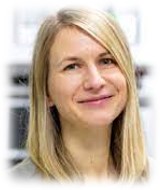 Tell us a little about your EV research, what attracted you to this field and any obstacles to progress? Tell us a little about your EV research, what attracted you to this field and any obstacles to progress?
I started working on EVs during my postdoc at UCSF in 2007 – everyone thought I was crazy to take a »dead-end« project, but I loved how it interconnected cellular and biochemical approaches to unravel the role of EVs in HIV pathogenesis. It was a steep learning curve, but in the end we managed to show that viral protein Nef is released from HIV-infected human T cells with EVs, which caused apoptosis of resting peripheral blood lymphocytes (PBLs). The hardest part was to convince editors of Traffic that we were not studying artefacts, but in the end the paper was one of the most cited of the journal. This led to my being awarded substantial funding to start my own group at the University of Ljubljana in 2013. Since then we have focused on elucidating the role of Nef-EVs in non-AIDS-defining diseases, with the ultimate goal of deepening the understanding of the role of EVs in cell-pathogen communication. Lately our focus has also shifted to blood plasma and urine EVs in health and disease. There are so many opportunities for fundamental discoveries in the EV field!
Why did you join ISEV and what are your thoughts on how ISEV might help you to address any challenges?
I was familiar with Clotilde Théry's work on EVs & immunity and had huge respect for the experts involved in initiating the society, so as soon as I could fund my EV work I was eager to participate in ISEV activities. My first ISEV meeting was in 2013, in Boston, and although this coincided with the tragic Boston Marathon bombing, scientifically it was such an outstanding event and the EV community was so open, enthusiastic and engaging. This motivated me to join the ISEV Board in 2020 as member at large, where I supported the Science & Meetings committee activities, and then continued as its executive chair from 2022. My aim is to create high quality scientific events that support an open and positive environment where everyone can grow. In the Rigour & Standardization subcommittee we try to address challenges in reproducibility of EV research, while the Special Interest Groups are networks of people who organize various activities to facilitate discoveries in a specific EV topic.
In what way have collaborations with other groups and/or industry impacted on your EV studies?
There is so much to learn by collaborating with experts in different research areas or career backgrounds. They broaden your mind, encourage rethinking of “dogmas” in the field, support innovative thinking and can also be timesaving – many challenges EV researchers are facing today have already been deeply researched in other fields. And they are also fun! Based on my research focus, I am especially interested in the intersection of EV research with the liquid biopsy field, nanoparticle field and virology.
What do you think is the most exciting thing in the future of EVs?
The EV field is still a relatively new area of research, so I anticipate many exciting fundamental discoveries emerging concerning their origin and function in organisms from all kingdoms of life. I am especially interested in the dynamics between EVs and classical signals/vehicles of intercellular and interspecies communication. Much work is needed to help us to differentiate key EV roles in organism biology (from those where EVs only act in a supporting role) and thereby help focus our translational efforts. Standardization of EV analytical methods will also bring about a huge change, as this will enable translation of EV discoveries into clinical and industrial settings.
How do you see your career progressing over the next five to ten years?
In my career I never made any step-by-step plans for the future, but I am always open to trying something new and challenging. So far, this attitude and hard work helped create a lot of opportunities for personal and professional growth that advanced my career. So, let’s see what the future brings, but love for EVs and EV community is definitely here to stay!
David Greening
 Tell us a little about your EV research, what attracted you to this field and any obstacles to progress? Tell us a little about your EV research, what attracted you to this field and any obstacles to progress?
We use multi-omics technologies to illuminate extracellular vesicle (EV) biology in human health and disease. Having been in the cell signaling field for more than a decade, our team integrates various advanced omic strategies to understand complex signaling biology, and the capacity to design deliverable therapeutic targets. I’ve trained internationally, across four institutes and three different lab teams – balancing technology and biology throughout my doctoral studies and training. From this I have learnt how to engage science and technology, observed the emergence of extracellular vesicles as a vibrant field of biology, and as a researcher, to be creative, balanced, and collaborative with my own and external networks.
Why did you join ISEV and what are your thoughts on how ISEV might help you to address any challenges?
I joined ISEV in 2019, and in 2021 was invited to be part of the international organizing committee for ISEV2022. My involvement in ISEV since has been as part of the organization of several international and regional ISEV-led meetings. Timing and a research focus did distract me from attending ISEV prior to 2022, however, through numerous collaborators and colleagues I became interested in ISEV, as far back as 2012 with my PI, Richard Simpson. I view ISEV as having an important and central role in the field, to disseminate knowledge, promote extracellular vesicle research and scientific discovery, as well as to engage and promote inclusivity, not only for our members, but expand further for academic, industry and commercial partnerships.
In what way have collaborations with other groups or with industry impacted on your EV studies?
Our collaborations have and continue to evolve. We collaborate when together, addressing a larger question becomes more of a reality. Our collaborations can start within our institute, local and regional networks, as well as international collaborative networks, and span academic-industry and commercial sectors. The primary reasons we collaborate relate to science or development, and balancing this is important to ensure your goals are met. We have collaborated to facilitate access to key technology, functional assay systems, targeted mass spectrometry assays, as well as expertise in machine learning. Our team has a long-standing and effective means of developing collaborations – something that I help assist for their own independence.
Do you plan to continue with EV research in the future and if so, what questions would you like to pursue?
The utility of EVs is now beginning to translate and transcend the boundaries of human health - our interests are focused on how these vesicles and their complex, and redundant signaling capacity, can be enhanced for therapeutic use. How can one enhance the ability of these vesicles to target selectively a tissue/region of interest, or be retained and released in a specific manner? The emergence of biological extracellular vesicles as next generation therapeutics offers many promises if we can engage and integrate the bioengineering and nanotechnology fields. Perhaps we know more about what EVs can do rather than what EVs are per se. Understanding this is a key pursuit of our research team, including the development of technologies and informatics to define and interpret this complexity.
What do you think is the most exciting thing in the future of EVs?
There has been a meteoric rise of extracellular vesicles since their emergence as biological messengers. Indeed, their ability to be manipulated has given rise as next generation therapeutics. This in itself has created a vivid intuitive imagination, for creative ideas in the field, for the ability of EVs to cross tissue barriers, target and deliver payloads to specific cells (including mutational signature of specific cancer cells), cloaking detection and stimulating specific cells, as well as the emergency of advanced imaging, analysis and tracking technologies. As their clinical utility extends from executing complex tissue remodeling, repair and regenerative functions, to vaccines, we witness a transformative era where these vesicles are reshaping the future of medicine as next-generation therapeutics. Although we are already witnessing their direct translation into the clinic, through Breakthrough Device/Technology programs, balancing expectation and the necessary regulatory and manufacturer approvals, we will need the ability to engage and integrate different research biotechnology sectors.
How do you see your career progressing over the next five to ten years?
Our interest in the field of EVs has only expanded in the past five years, and I see this being one of the primary aspects of our research program. We have always tried to balance a focus on fundamental questions in our field and how we can translate our research with impact.
Our team integrates advances in functional proteomics and the application of mass spectrometry. We have recently detailed universal features of circulating extracellular vesicles in humans. This knowledge will inform the fundamental building blocks of circulating vesicles - dictating their genesis, membrane dynamics, environmental interactions, and capacity to house and transmit complex signals. We plan to expand this concept to large-scale population studies of human health and disease, advance EV purification and characterization techniques, and extend the international EV guidelines for standardized circulation EV research.
Our current research interests and programs utilize lipidomic technologies to understand the lipid composition relating to extracellular vesicle biology. This is providing new insights into the lipid architecture of these diverse vesicles and how we view their communication circuitry. We are also applying new developments in machine learning approaches as well as spatial proteomics, to understand the subcellular organization of proteins – how they align and distribute with health and disease, and how EVs may impact the proteome landscape of specific organelles.
As for my career, our team culture and environment embody creative thinking. I balance collaborations, our program and funding direction, and our industry involvement to develop aspects of our research where benefit can be gained. Australia's biotech landscape is currently revolutionizing our impact in health through technology and deliverable medicines, and I’m happy to remain at this academic-industry interface to address human health and biology.
January 2024 Member Spotlight
Suman Dutta
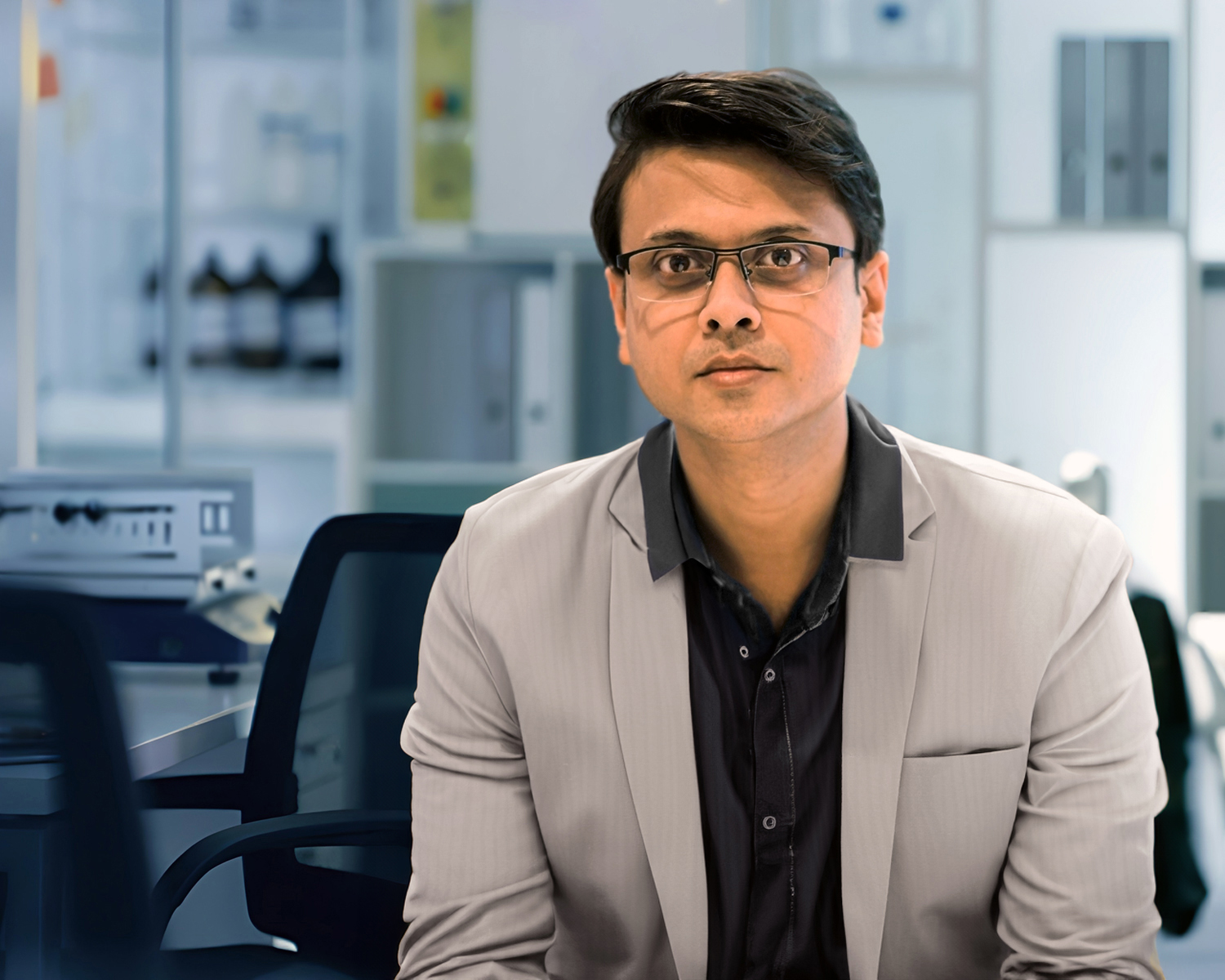 Tell us a little about your EV research, what attracted you to this field and any obstacles to progress? Tell us a little about your EV research, what attracted you to this field and any obstacles to progress?
In 2011, as I embarked on my quest for a postdoctoral position, the emerging field of extracellular vesicles (EVs) captured my attention. At that time, the field was in its nascent stages, and the term 'exosome' held prominence. My journey with EVs commenced with a fellowship program at Mahidol University, where I worked on the role of EVs in cholangiocarcinoma (bile duct cancer), marking the inception of EV research in Thailand. This initial exposure ignited a profound interest in EVs, prompting me to delve into multiple EV-related projects across various institutions and countries, including University of California Los Angeles (UCLA) in the USA, and my current position at the University of Oxford in the UK.
At UCLA, I focused on unravelling the role of brain-derived blood exosomes in neurodegenerative diseases such as Multiple System Atrophy, Parkinson’s disease, and related disorders. The primary goal was to isolate brain-derived EVs from blood, characterize their composition, and identify signature biomolecules using novel assays. However, the intricacy of isolating a pure population of brain-derived EVs from blood proved to be a significant challenge due to the absence of specific surface markers, which are exclusive to the central nervous system (CNS) neurons. Addressing this challenge has become a pivotal aspect of my current research at the University of Oxford, where I aim to identify distinct markers on brain-derived EVs.
Throughout my journey, I often found myself to be the first person working with EVs within a lab. In each case the initial days were marked by challenges in establishing and standardizing assay protocols. However, with invaluable support from my mentors and sharing knowledge within the lab and using online platforms, I was able to surpass many of the obstacles.
Why did you join ISEV and what are your thoughts on how ISEV might help you to address any challenges?
My decision to join ISEV stems from a profound belief in the power of collaboration and knowledge exchange. In the dynamic realm of EV research. I recognize ISEV as the global center, offering a platform to connect with leading experts and stay abreast of the latest developments. Witnessing the impact of diverse perspectives at ISEV meetings and workshops, I am inspired by the opportunity to share my research, discuss challenges, and seek guidance from experts. This collective spirit within the ISEV community provides a valuable support system, enabling researchers to navigate obstacles collaboratively. Moreover, I find immense value in the specialized resources offered by ISEV, such as the educational courses and focused seminars. Particularly noteworthy are the efforts to standardize EV research through initiatives like the MISEV guidelines. By aligning with these standards, I believe my work gains not only credibility, but also contributes to a broader, more cohesive understanding of EV science.
In what way have collaborations with other groups or with industry impacted on your EV studies?
Collaborations with various research groups have significantly enriched my EV studies. Our collaborations have yielded invaluable rare samples, an essential asset that propelled our research into novel dimensions. The generosity of fellow scientists in sharing such unique resources has been pivotal to advancing our investigations. Despite not having any formal industrial collaborations, engaging in insightful discussions with scientists from industry has been transformative. These interactions have proven instrumental in navigating complexities and adopting innovative methodologies.
My most notable collaborations involved the application of dSTORM imaging and native mass spectrometry, two techniques that brought a new layer of depth to our EV sample analyses. Additionally, our venture into the use of Surface-Enhanced Raman Spectroscopy (SERS) was made possible through collaboration, showcasing the interdisciplinary nature of our research endeavors. Discussions and shared expertise have not only enhanced our techniques but also broadened our investigations.
In essence, these collaborations underscore the collective strength of the scientific community, where shared knowledge and resources propel us collectively towards ground-breaking discoveries.
Do you plan to continue with EV research in the future and if so, what questions would you like to pursue?
Without a doubt, my trajectory in EV research is a steadfast commitment. While neuroscience has been my primary focus, I am open to diversify my contributions across various facets of EV research if opportunities arise. A paramount question steering my future endeavors is discerning the origin of EVs. Although common biomolecules unite the EV population, unraveling the specific cellular roots of individual vesicles intrigues me. I envision a path where we not only identify distinctive markers characterizing EVs from different cell types, but also unravel their nuanced roles within our biological tapestry. This pursuit aligns with my overarching aim of demystifying the intricate landscape of EVs, contributing insights that transcend the confines of neuroscience. The journey ahead promises exciting discoveries, and I am enthusiastic about the multifaceted questions we aim to answer, each unlocking a new chapter in our understanding of these remarkable entities.
What do you think is the most exciting thing in the future of EVs?
The horizon of EVs unfolds with tremendous promise, and what excites me most is their burgeoning role in clinical applications, with specific EV cargoes emerging as potential disease biomarkers. Leveraging this, EVs hold the key to revolutionizing disease screening, offering a minimally invasive window into our health.
Moreover, the prospect of engineered EVs serving as targeted carriers for therapeutic drugs is truly compelling. While challenges persist, such as precise organ targeting, these endeavors signify a paradigm shift in drug delivery. Uniting this potential with ongoing studies into EVs' influence on disease resistance and progression opens avenues for personalized therapies.
Beyond these, the growing realization that EVs can be harnessed in standard physiological conditions, and not just in pathophysiology, heralds a new era. As our foundational knowledge expands, I foresee a future where EVs seamlessly integrate into clinical practice, underpinning tailored therapeutic interventions. This intersection of research paths instils optimism, portraying EVs not just as microscopic entities but also as potent agents shaping the future landscape of medicine.
How do you see your career progressing over the next five to ten years?
As I envision my journey in EV research over the next five to ten years, my aim is to advance neuroscience with a translational approach. The prospect of contributing to the field of neurodegenerative diseases is particularly exciting. In the realm of biomarker discovery, where accessing brain tissue from a living individual remains unrealistic, the analysis of brain-originating blood EVs emerges as a ground-breaking avenue. Unraveling cellular and pathophysiological events in the brain by analyzing these circulating vesicles holds immense potential for diagnosing and understanding neurological disorders.
Moreover, the prospect of delivering therapeutics as EV cargo targeting brain cells, overcoming the constraints imposed by the blood-brain barrier, could be immensely beneficial. Drawing inspiration from the EV community, I aspire to navigate the intricate landscape of neuroscience research, contributing to improved diagnostics and innovative therapeutic interventions. The goal is to bring about tangible advancements in our understanding of neurological disorders and enhance the quality of life for individuals affected by these conditions.
December 2023 Member Spotlight
Meline Macher
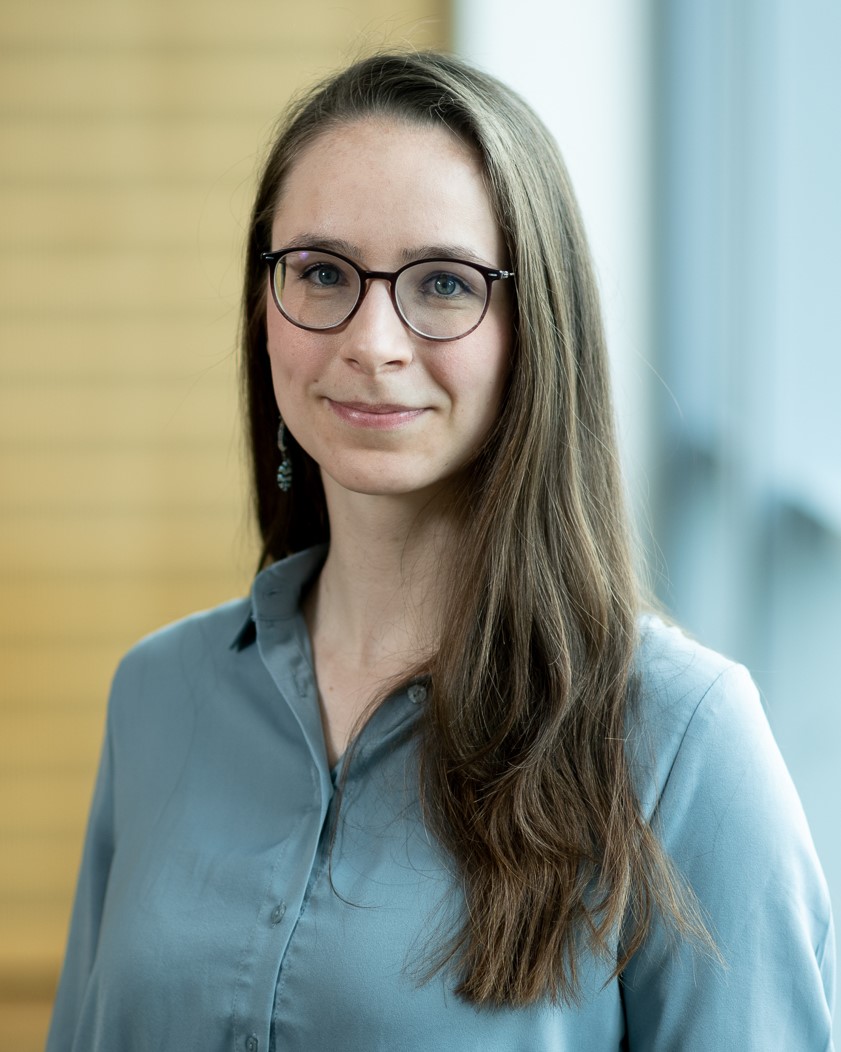 Tell us a little about your EV research, what attracted you to this field and any obstacles to progress? Tell us a little about your EV research, what attracted you to this field and any obstacles to progress?
The goal of my research is to build a synthetic version of mesenchymal stem cell EVs as a potential therapeutic for inflammatory skin disease, mainly atopic dermatitis. The synthetic EVs are based on lipid vesicles of different, tunable sizes, decorated with surface peptides and can be loaded with hydrophilic molecules such as miRNAs. When comparing the activity of the natural and synthetic EVs in 3D human organotypic skin models under inflammatory conditions, we have observed exciting beneficial effects with the synEVs.
When I started working with mesenchymal stem cell EVs, I was fascinated by their numerous and versatile therapeutic effects. However, one of the main challenges in my work was to develop the composition of the synthetic EVs by reducing the complexity of the natural ones, as it remains largely elusive which molecules are the functional components of EVs. One particularly interesting case in my opinion is how EVs achieve endosomal escape and whether we might be able to exploit this for synthetic nanoparticle delivery systems once we understand it.
Do you plan to continue with EV research in the future and if so, what questions would you like to pursue?
I am really interested in EVs and have also hugely enjoyed interacting with the EV community. This field has such interesting questions to answer, exciting new technologies being developed and inspiring people who drive the research forward that I would love to stay close to it. I am particularly excited about being at the interface between synthetic biology and EV research right now, as I see a great potential in this combination. However, I am also curious about exploring other topics and want to expand my skill set. My interest has been especially sparked by biophysical aspects and techniques that relate to the EV and synthetic biology fields.
What do you think is the most exciting thing in the future of EVs?
For me, perhaps the most exciting advance would be to reveal step by step which molecular components of EVs are mediating which effects and what signalling mechanisms they are acting by. Related to this, I think it will be very helpful to better understand EV heterogeneity. Of course, I am particularly excited by the contributions that synthetic biology may be able to make to this endeavour. I believe that additionally we should continue to explore synthetic EVs not only as a tool for better understanding EV biology, but also as a potential therapeutic, to overcome challenges in EV heterogeneity, batch variations and scale-up of production. Last but not least, I am impressed by and love to see how researchers in the EV field are constantly working on improving rigor and standardization in the field, as I think this will benefit all of the exciting research questions and potential applications.
How do you see your career progressing over the next five to ten years?
I am completing my PhD at the end of this year and am looking for a postdoc position next. I would like to start a position around April-June 2024, depending on how long it takes to wrap up my current project. The further future beyond that will depend on how the postdoc develops, I think. So far, I really enjoy research and would love to continue, but I am also open to other opportunities and will decide after the postdoc which path to choose.
Rosalie Martel
 Tell us a little about your EV research, what attracted you to this field and any obstacles to progress? Tell us a little about your EV research, what attracted you to this field and any obstacles to progress?
Our work focuses on the development of a high-throughput, antibody microarray-based method for the analysis of membrane and cytosolic EV proteins, as well as its application to phenotype EVs from patient plasma for cancer typing, more specifically in the context of colorectal cancer. I’ve always been very interested in the field of personalized medicine, and as such, I was drawn to the concept of liquid biopsy, to the idea of making it less invasive and easier to establish a diagnosis and monitor disease progression. In that context, I got interested in the information-dense nature of EVs, how they carry complex mixes of biomolecules with a wealth of unearthed information, and how we can tap into that to help diagnose and monitor disease. With this line of research, we’ve met many challenges along the way, including how inter-patient variability and sample availability can hinder the search for identifying patterns.
Why did you join ISEV and what are your thoughts on how ISEV might help you to address any challenges?
I joined ISEV to explore the EV field, learn from other EV researchers with similar interests, and share our findings with the community. The discussions at the ISEV meetings and in ISEV journals regarding EV purification standardization, characterization, and storage are very important and helped us with the structuration of our workflows. Similarly, I think that the way ISEV allows me to connect with a network of fellow researchers who may face similar questions will help me navigate future challenges through exchange and discussion, especially as we dive deeper into the analysis of EVs from patient samples.
In what way have collaborations with other groups or with industry impacted on your EV studies?
Collaboration has played an integral part in our EV efforts from the very start, as collaboration is a powerful way to delve into a new field. As an engineering lab focused on developing technologies with biomedical applications, we work closely with labs specializing in EV research, which provided essential insight when we started developing our EV-based technologies. From an application standpoint, collaborations with clinicians are equally essential to put together impactful studies with patient samples and valuable clinical insight.
Do you plan to continue with EV research in the future and if so, what questions would you like to pursue?
Future research will depend on opportunities, but I am keen to keep exploring the potential of EV analysis in personalized medicine, more specifically the biomolecular analysis of EVs for disease identification and typing.
What do you think is the most exciting thing in the future of EVs?
I think that multiomic EV analysis platforms and highly multiplexed EV analysis modalities that provide elaborate EV signatures have tremendous potential, be it from a technological, biological or medical standpoint. I can’t wait to see how far these will be able to go, and what kind of biological insights are going to stem from them.
How do you see your career progressing over the next five to ten years?
Hard to say, as I am a stage in my career where I am open to exploration and will go where opportunities take me!
November 2023 Member Spotlight
Paschalia (Lia) Pantazi
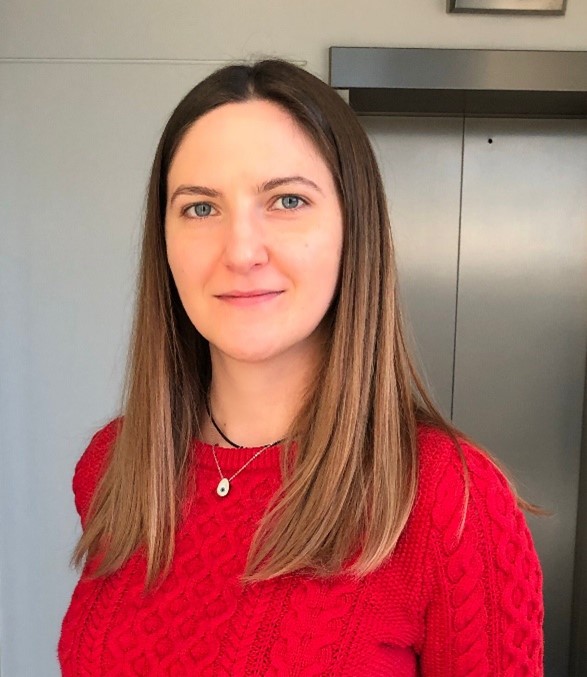 Tell us a little about your EV research, what attracted you to this field and any obstacles to progress? Tell us a little about your EV research, what attracted you to this field and any obstacles to progress?
I joined the EV field in 2015, when I started my PhD in Prof Dave Carter’s lab at Oxford Brookes University. For my PhD, I investigated the role of EVs from chemotherapy treated cells in breast cancer metastasis. I also assessed different EV labelling methods and studied the dynamic uptake of EVs by different types of cells using high resolution microscopy. For my post-doc, I moved to Imperial College London to study the role of EVs in a different context, pregnancy. More specifically, my work is focused on the communication between the immune system and the placenta. What I find most fascinating is the diversity of EVs and their involvement in all aspects of human biology. We still have a long way to go until we decipher the specificity of EV cargo and EV-cell interactions and their significance in vivo, but the rapid expansion of the field promises great advancements.
Why did you join ISEV and what are your thoughts on how ISEV might help you to address any challenges?
I joined ISEV as a PhD student and benefited from it in various ways. I got to attend and present my work at the annual meetings (2018 - 2023), accessed the educational material (coursera, EV club), got to contribute to the next iteration of the "minimum information for studies of EVs" (MISEV), published my research in their prestigious journal (JEV), and so much more. The topic-specific workshops and the task force groups, I believe, are great ways to advance research and promote standardisation effectively.
In what way have collaborations with other groups or with industry impacted on your EV studies?
I have been collaborating with other EV researchers, sharing reagents (antibodies for EV markers, constructs, etc), equipment (for nanoparticle tracking analysis, flow nanoanalysis, etc), and advice. I think it is vital to have a positive attitude towards helping each other, providing insights and expertise and create a healthy research environment. Collaborations can take a project a lot further.
Do you plan to continue with EV research in the future and if so, what questions would you like to pursue?
Definitely! I have studied EVs from cancer cells, immune cells, placenta in the context of cargo characterisation, uptake, function, etc. For my next steps, I would like to explore the determinants of EV incorporation by recipient cells.
What do you think is the most exciting thing in the future of EVs?
I think the most exciting thing in the future of EVs is their clinical applications. As we unravel the complex world of EVs in normal physiology and disease, we realise their increased potential for clinical use, as biomarkers, drug carriers, therapeutic targets, etc. The increasing number of academic groups, but also companies (start-ups), that focus on EV applications is an indicator of their great potential.
How do you see your career progressing over the next five to ten years?
I am not sure what the future holds, but I want to continue exploring the fascinating world of EVs either in academia or industry. I would like to tackle some of the challenges in the field and be part of the new era of EV research.
Sandip Patel
 Tell us a little about your EV research, what attracted you to this field and any obstacles to progress? Tell us a little about your EV research, what attracted you to this field and any obstacles to progress?
I joined the EV field in 2015, when I started my PhD in Prof Dave Carter’s lab at Oxford Brookes University. For my PhD, I investigated the role of EVs from chemotherapy treated cells in breast cancer metastasis. I also assessed different EV labelling methods and studied the dynamic uptake of EVs by different types of cells using high resolution microscopy. For my post-doc, I moved to Imperial College London to study the role of EVs in a different context, pregnancy. More specifically, my work is focused on the communication between the immune system and the placenta. What I find most fascinating is the diversity of EVs and their involvement in all aspects of human biology. We still have a long way to go until we decipher the specificity of EV cargo and EV-cell interactions and their significance in vivo, but the rapid expansion of the field promises great advancements.
Since joining the Buck Institute for Research on Aging in Novato, USA as a postdoctoral fellow in 2019, my journey into the realm of extracellular vehicles (EVs) has been captivating. I've been intrigued by the determination and packaging of cargo within EVs, their crucial role in cell-to-cell communication, and their impact on aging and age-related diseases.
My research focuses on advancing exosome enrichment workflows and mass spectrometry-based proteomics to develop cutting-edge diagnostic and therapeutic tools for promoting healthy aging. However, the reproducibility of EV research poses a challenge due to their diverse sizes and heterogeneity. Standardized workflows and benchmarks are urgently needed.
I investigate EV profiles in cell culture through senescence induction and analyze clinical samples from young and elderly cohorts. These efforts have significantly deepened our understanding of EVs in senescence and aging biology, identifying novel proteins associated with the Senescence-Associated Secretory Phenotype. Also, I am interested in understanding the cargo loading mechanisms and engineering EVs to precisely target senescent cells, thereby unlocking new therapeutic strategies.
Why did you join ISEV, and what are your thoughts on how ISEV might help you to address any challenges?
I joined ISEV as a Junior member in 2023 because I recognized its immense significance as a knowledge hub, fostering collaboration, and providing support to EV researchers. Attending the ISEV2023 conference in Seattle was a key benefit, keeping me updated with the latest discoveries and connecting me with experts in the field.
ISEV offers valuable resources, including EV characterization guidelines and standardized protocols, addressing the technical challenges I face. By promoting standardization and quality control, ISEV ensures consistent and comparable research outcomes, enhancing the credibility of EV research.
ISEV's potential to organize educational initiatives such as workshops and webinars can help researchers stay informed and provide a platform for presenting work and receiving feedback. Overall, ISEV has been invaluable for my growth as an EV researcher, addressing challenges and advancing my contributions to this fascinating field.
In what way have collaborations with other groups or with the industry impacted your EV studies?
Collaborations with other research groups and industry partners have significantly influenced my EV studies, providing access to expertise, resources, validation, and accelerating progress. These collaborations have not only enhanced the quality and credibility of my research but have also expanded the scope of my investigations.
For instance, partnering with Professor Erin Baker's team at the University of North Carolina at Chapel Hill, USA, has broadened our research horizons by venturing into lipidomics profiling in addition to proteomics profiling. This collaboration has enriched our understanding of EV cargo composition and provided valuable insights into the lipid components of EVs.
Collaborating with Professor Ronald Kahn at Harvard Medical School has shed light on the intricate mechanisms of miRNA retention in cells or its secretion into exosomes/sEVs. Additionally, collaboration with Professors Judith Campisi and Pierre-Yves Desprez at the Buck Institute for Research on Aging has paved the way for the development of engineered EVs specifically designed to target senescent cells, unlocking innovative therapeutic strategies. These collaborations have been instrumental in advancing our understanding of crucial aspects of EV research.
Do you plan to continue with EV research in the future, and if so, what questions would you like to pursue?
Certainly, I am committed to advancing my work in EV research. The field of EVs is dynamic and constantly evolving, presenting numerous captivating opportunities for exploration.
I am particularly interested in investigating the potential of EVs as biomarkers for detecting and monitoring aging and age-related diseases over time. This longitudinal approach could provide valuable insights into disease progression and therapeutic responses.
Additionally, I am dedicated to advancing the engineering of EVs for targeted drug delivery. This exciting avenue has the potential to revolutionize drug delivery strategies, offering more precise and effective treatments.
What do you think is the most exciting thing in the future of EVs?
The future of EVs is filled with excitement and potential, particularly in the field of therapeutic applications. EVs offer a natural and targeted approach to drug delivery, highly relevant to precision medicine. This opens up new avenues for targeted therapies and personalized treatments. Additionally, the discovery and utilization of EV biomarkers have significant implications for disease diagnosis, prognosis, and monitoring. By analyzing EV cargo, we can potentially identify specific biomarkers for various conditions, revolutionizing early detection and monitoring. Advancements in EV isolation, characterization, and engineering techniques further enhance our understanding and utilization of these versatile vesicles. Cutting-edge technologies like single-vesicle analysis, high-throughput profiling, and genetic engineering of EVs hold great promise for unlocking their therapeutic potential. Integration with other fields such as AI, nanotechnology, and regenerative medicine will drive innovation and expand the applications of EVs. In summary, the future of EVs is poised to transform healthcare, enabling personalized and regenerative medicine approaches.
October 2023 Member Spotlight
Ahmed Abdelgawad
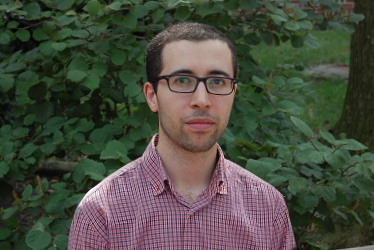 Tell us a little about your EV research, what attracted you to this field and any obstacles to progress? Tell us a little about your EV research, what attracted you to this field and any obstacles to progress?
My research focuses on the study of RNA transport in extracellular vesicles (EVs), particularly circular RNAs (circRNAs). I am fortunate to be working on one of the most exciting fields in biological research. EVs have the potential to revolutionize our understanding of the molecular mechanisms of intercellular communication. This potential could be harnessed in developing new diagnostic and therapeutic approaches. The other exciting part of my research involves circRNAs which are a fascinating class of RNAs. CircRNAs are made from the same gene as mRNAs, yet they could exert different, and sometimes even antagonistic, functions such as in cancer. Although, I only started my EVs research quite recently, I was fortunate to be among a wonderful group of researchers who helped me and taught me a lot.
Why did you join ISEV and what are your thoughts on how ISEV might help you to address any challenges?
ISEV is a wonderful community of researchers and scientists from all around the world that brings opportunities for collaboration both in academic as well as industry settings which further advances EVs research. In addition, ISEV gives researchers a collective voice in advocating the importance and potential of EVresearch and engaging with funding and regulatory agencies. On an individual level, the student network on EVs (SNEV) helps students share their knowledge and address challenges in a supportive environment. As a relatively new member of the EV research community, I think being a part of such network is particularly helpful as I often face many technical questions. This can also help students get in touch with experts which can help them advance their future career. For instance, during the ISEV2023 annual meeting, ISEV organized Meet the Experts lunches where we had a chance to talk to some of the experts in EVs research.
In what way have collaborations with other groups or with industry impacted on your EV studies?
Collaborations can have a significant impact on advancing our scientific knowledge. As we expand this knowledge, we become more specialized in deeper niches, and hence collaborations are imperative to the continuity of impactful research. We have been collaborating with Ken Witwer’s group at Johns Hopkins University in Baltimore, MD on multiple projects since 2020. We are exploring the role of circular and other non-coding RNAs in EVs in different diseases as well as novel ways to characterize these RNAs in EVs.
Do you plan to continue with EV research in the future and if so, what questions would you like to pursue?
Yes, there are still many unanswered questions in EVs research that I would like to explore. The two main questions that I am interested in relate to cargo sorting and EVs heterogeneity. Even though a lot of factors involved in cargo sorting have been identified, the mechanistic details of how specific molecules are selectively sorted into EVs are still lacking. It is also fascinating to explore the interplay between cargo sorting and EV heterogeneity. Understanding this process can help improve the therapeutic potential of EVs. We and our collaborators are currently working on addressing some of these questions.
What do you think is the most exciting thing in the future of EVs?
One of the most exciting directions for future EV research is diagnostics. EVs offer a minimally invasive diagnostic alternative to traditional tissue biopsies. Many biomarker tests have recently completed clinical trials, and so it will be exciting to see some of these biomarkers get approved for clinical trials in the near future. Future therapeutic applications of EVs are also exciting. For example, therapeutic RNAs or proteins could be packaged into EVs that have been engineered to target specific cell types. The non-immunogenicity of EVs, at least from the same species, makes them ideal drug-delivery systems. There are countless therapeutic applications for EVs from the delivery of deficient RNAs or proteins to specific targeting of cancer cells which will help circumvent most of the side effects of chemotherapeutic drugs.
How do you see your career progressing over the next five to ten years?
I am eager to transition my expertise in EVs into an industrial setting. Working in collaboration with interdisciplinary teams from both academia and industry, I aspire to leverage my knowledge to translate scientific discoveries into practical solutions. I aim to contribute to the development and commercialization of cutting-edge technologies and products based on EVs research.
Yuima Sakamoto
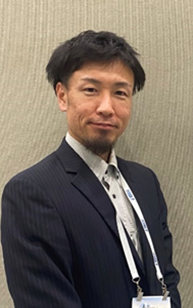 Tell us a little about your EV research, what attracted you to this field and any obstacles to progress? Tell us a little about your EV research, what attracted you to this field and any obstacles to progress?
We are studying cancer metastasis. Metastasis is established when cancer cells interact with multiple cell types that form a tumor. Our research focuses on EVs, which are one of the communication tools.
Why did you join ISEV and what are your thoughts on how ISEV might help you to address any challenges?
I think ISEV provides a good opportunity to get an objective opinion about my results. It is very important to hear from other researchers about my future research activities.
In what way have collaborations with other groups or with industry impacted on your EV studies?
I believe collaborating is a good stimulus to my research activities and also motivation, and will lead to further EV research development.
Do you plan to continue with EV research in the future and if so, what questions would you like to pursue?
I would like to investigate whether our results, which demonstrate that inhibition of recipient cell uptake of cancer-derived EVs is associated with reduced metastasis, applies to other types of cancer metastases as well.
What do you think is the most exciting thing in the future of EVs?
It is my hope that the results of the EV research will help many people to be saved, through the use of multicomponent EV biomarkers to facilitate earlier diagnosis of cancer and other diseases. In addition, to the inhibition of bad EVs to help prevent diseases.
How do you see your career progressing over the next five to ten years?
I would like to continue my research and be a leader of the team. I would also like to experience research overseas.
September 2023 Member Spotlight
Hermine Counil
 Tell us a little about your EV research, what attracted you to this field and any obstacles to progress? Tell us a little about your EV research, what attracted you to this field and any obstacles to progress?
I am originally from the neuroscience field. When I started my first Master’s internship in a lab in France, I became passionate about investigating Alzheimer’s disease (AD). AD is a complex disease with multiple risks factors such as chronic inflammatory diseases, and its early mechanisms are still unclear. In 2019, I had the opportunity to do an internship in Canada, where I met Prof Charles Ramassamy, who works on several aspects of research involving AD and exosomes. The EV field was new to me, and I was very intrigued by their possible role in AD pathogenesis. I started a PhD in his lab in January 2020. Since then I have been working on the influence of exosomes in the communication between the brain and its periphery, and its putative impact in AD pathogenesis. The COVID-19 pandemic has been the main obstacle to my research progress, but I feel lucky to have been surrounded by my many colleagues.
Why did you join ISEV and what are your thoughts on how ISEV might help you to address any challenges?
When I started my PhD, I had to learn everything about EVs from scratch. ISEV offers a tremendous amount of guidance, tools, tips and theorical knowledge. I remember watching the videos about what is an exosome and how to do an ultracentrifugation to isolate specific EV sizes. Thanks to the EVClub, I also learned (and still learn) so much about different techniques and new scientific discoveries. Some of the presentations have helped me to plan my research, others to consolidate my results. Nowadays, I spend more time reading and learning about EVs than about neuroscience. ISEV is the biggest society in the EV field and tries to unite researchers from everywhere. It is exciting! I believe that collaborations and mutual aid are the keys for better research and better progress of knowledges.
In what way have collaborations with other groups or with industry impacted on your EV studies?
Collaborations with other groups have been beneficial for my research. Either to go further in some experiments, or to contribute another point of view to my project, I enjoy meeting researchers, exchanging, and learning from others. I love learning, so collaborating is something that I would like to continue to expand, and I cannot wait to see what is next!
Do you plan to continue with EV research in the future and if so, what questions would you like to pursue?
I definitively would like to continue in the EV and AD research fields, as there is so much more to discover and learn. I am very interested in the influence of EVs on neuronal activity and on neuroinflammation, especially with microglial cells. I would also like to better understand the influence of EVs on brain alterations in metabolic diseases. Even if EVs are not be the cause of AD or other neurodegenerative diseases, there is no doubt that they play an important role in their pathogenesis. EVs can also help us to diagnose these pathologies earlier and to track their progression. I believe that they could also help us to unravel why sporadic AD appears.
What do you think is the most exciting thing in the future of EVs?
The EV field is still growing and attracts more and more attention, and there are so many unknowns and unanswered questions, for example, how EVs are taken up in to target cells. To my mind, one of the most exciting things about the future of the EV field is the potential it has to be routinely be used as a biomarker tool for AD and other diseases, such as cancers.
How do you see your career progressing over the next five to ten years?
After my PhD I would like to do a post-doc and learn new techniques, such as optogenetic. I want to continue in the field of EVs in AD pathogenesis and to understand better what is happening in the brain. Depending on the opportunities, I would enjoy combining this new chapter with travel, but later I wish to establish myself in Canada as a professor. I love sharing knowledge and I would like to teach in a university, while continuing research in my own lab.
Victor Bodart-Santos
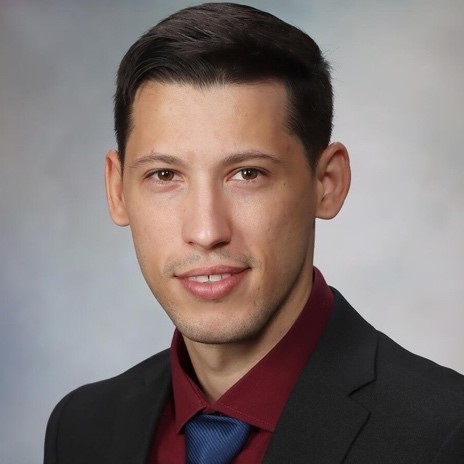 Tell us a little about your EV research, what attracted you to this field and any obstacles to progress? Tell us a little about your EV research, what attracted you to this field and any obstacles to progress?
I started in the world of EVs 10 years ago during my undergraduate at the Federal University of Rio de Janeiro in Rio de Janeiro, Brazil. At that point, I was studying Mesenchymal Stem Cells (MSCs) therapeutics in CNS disorders and EVs were not as popular. However, the paracrine effect of MSCs alert us about the potential role of EVs as communication agents and their potential for regenerative medicine.
Since then, I pursued the role of EVs in different contexts relating to Alzheimer’s disease (AD). In my master's studies, we showed that MSC-EVs are taken up by astroglial cells and protect neurons from synaptic damage. In 2016, during my PhD in Dr. De Felice’s group, I expanded my research to address the pathological involvement of EVs in dementia, and in 2023 we were the first to show that brain-derived EVs from AD and other tauopathies can contribute to memory impairment.
Why did you join ISEV and what are your thoughts on how ISEV might help you to address any challenges?
During my EV research, I faced several technical challenges of working in such a young field of study. I believe that ISEV is making good efforts to address many of these challenges through the task forces, MISEV guidelines, and stimulating/supporting the debate among researchers.
In what way have collaborations with other groups or with industry impacted on your EV studies?
Collaboration has been fundamental to my EV research. The study of EVs involves the application of different methodologies, which makes collaborations among research groups with different expertise essential for the advancement of this field. Science becomes easier when you understand that you do not have to be an expert in everything, but instead, you can have the support of others who have already struggled to find good solutions to your question. That is applicable to both research groups and industry and this exchange of knowledge is what keeps science moving forward.
Do you plan to continue with EV research in the future and if so, what questions would you like to pursue?
I am a neuroscientist and passionate about EVs. Currently, I am working as a post-doctoral researcher in Dr. Tsuneya Ikezu’s group at Mayo Clinic Florida (Jackonsville, US), where we investigate the beneficial and pathological involvement of EVs in neurodegenerative diseases. I strongly believe there is so much to be discovered about EV communication in CNS and neurodegenerative conditions, and these are the core of questions I aim to address in the future.
What do you think is the most exciting thing in the future of EVs?
I believe EVs have the greatest potential to be used as biomarkers and in therapeutics. I think that in the future new technologies that can combine EVs and synthetic nanoparticles can provide new tools for regenerative medicine, cancer and neurodegenerative disease treatments.
How do you see your career progressing over the next five to ten years?
In the short to medium term, I intend to answer many of the questions that I still have open as a researcher in academia to then develop my independent career in science, as a principal investigator. In the long term, as part of my mission as a scientist and enthusiast of biotechnology entrepreneurship, I plan to be more involved in the development of scientific-based products that can cross the translational bridge and impact on people's lives.
August 2023 Member Spotlight
Liam Barry-Carroll
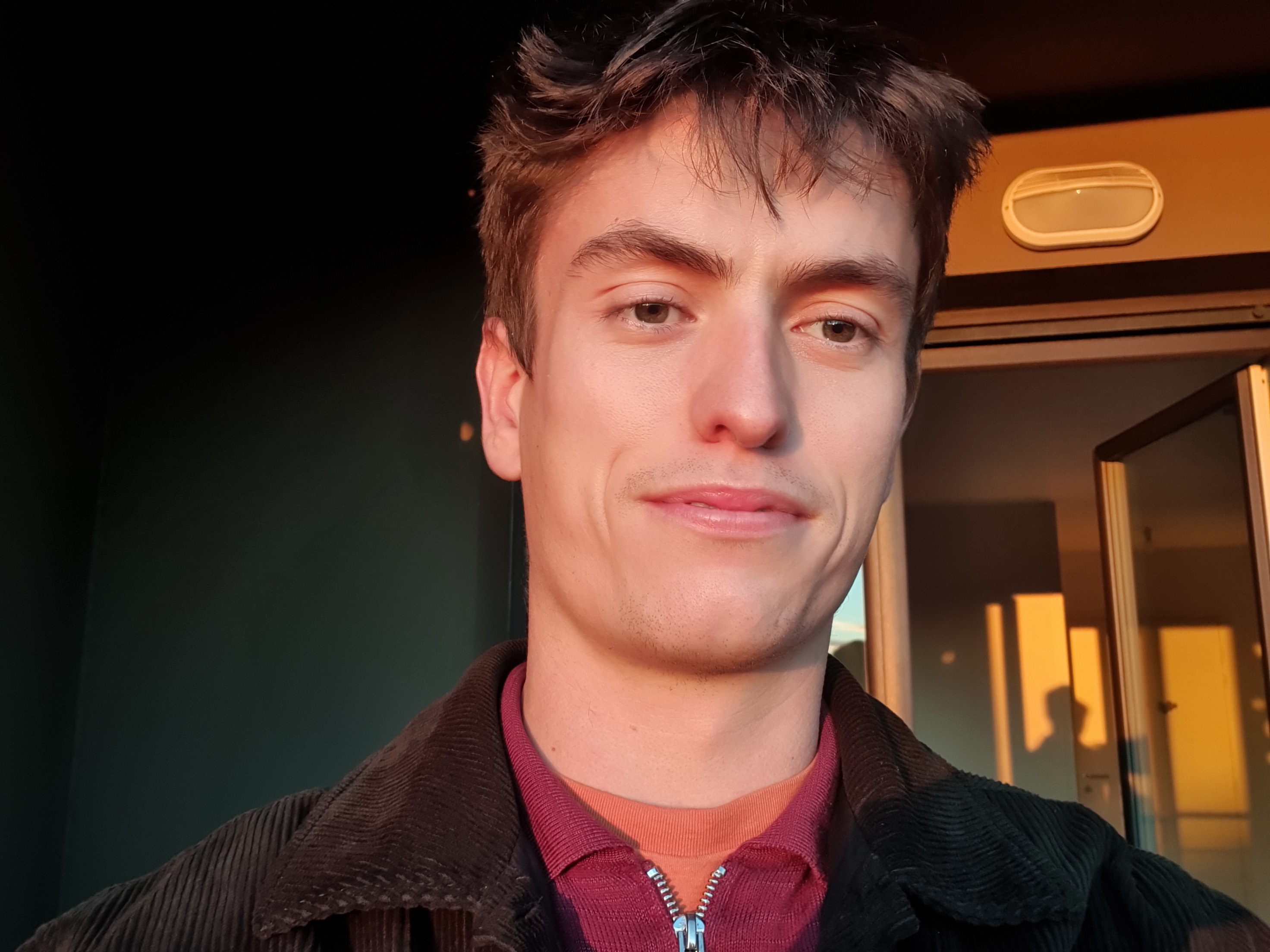 Tell us a little about your EV research, what attracted you to this field and any obstacles to progress? Tell us a little about your EV research, what attracted you to this field and any obstacles to progress?
I am currently a post-doc in the NutriNeuro lab in Bordeaux, France, which I began in 2021. I am investigating the profile and changes in EV content during cognitive alteration and how this can be modulated through dietary interventions with omega-3. Finding this project was actually a bit by chance as my research background is in neuroimmunology. Most of the obstacles have been related to establishing a pipeline of EV research in the lab and therefore looking for best practice and protocols to make sure we are really working with EVs.
Why did you join ISEV and what are your thoughts on how ISEV might help you to address any challenges?
I joined ISEV in order to be part of a global network of EV experts, so that I could get up to scratch with EV research and learn about the best practice when it comes to EV studies. I think that joining ISEV has been very valuable for me as I now have the chance to build a network of scientists to help inform and inspire my research. Moreover, it has helped me to overcome some of the methodological and experimental challenges facing our EV research.
In what way have collaborations with other groups or with industry impacted on your EV studies?
Over the past year and a half I have had the opportunity to join some very exciting collaborations, which have been a great way to exchange ideas and to improve our protocols and really gives you the chance to look at your research from a different perspective.
Do you plan to continue with EV research in the future and if so, what questions would you like to pursue?
Yes, I think I would really like to and if I can, to work on building a bridge between EV dynamics and their involvement in neuroimmunology and related CNS disorders.
What do you think is the most exciting thing in the future of EVs?
For me it is the fact that we are still really only beginning to understand some of the basic aspects and principles of EV science. In that sense there are still so many open questions and it is very exciting to see how our collective questions unravel in our respective fields.
How do you see your career progressing over the next five to ten years?
For now, the focus will be on completing my postdoc and then afterwards I am not 100% sure. Ideally, I would like to stay in EV research but I also like to go with the flow so we will see where the rest of my postdoc takes me.
Kristine V. Hoagstrom
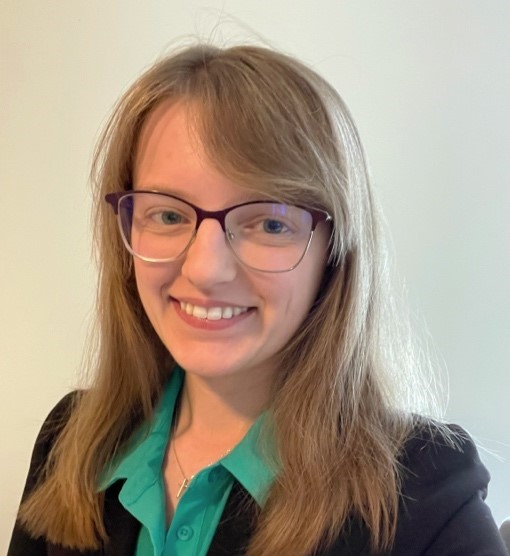 Tell us a little about your EV research and what attracted you to this field. Tell us a little about your EV research and what attracted you to this field.
I am relatively new to the field of EV research and currently in the second year of my Ph.D. program researching EV biogenesis in cancer. I first became interested in the nanoparticle field in the senior year of my undergraduate degree as a method of drug delivery for cancer therapeutics. Upon joining the Hollingsworth lab at UNMC, I found a collaborative group of individuals working on various aspects of EV research in cancer biology. I became particularly fascinated with their unique biogenesis and cargo sorting mechanisms and have since focused my research on furthering our understanding of these processes in cancer.
Why did you join ISEV and what are your thoughts on how ISEV might help you to address any challenges?
ISEV is a unique professional society that brings together researchers from across the globe to advance the field of EV research. Joining a group such as this, especially as an early-career Ph.D. student, allows me to establish a greater understanding of the ever-growing field and form connections with other EV researchers to share ideas about future studies.
In what way have collaborations with other groups or with industry impacted on your EV studies?
As an early-career Ph.D. student, I haven’t had the opportunity to begin many collaborative efforts with other research groups. However, I recently attended my first ISEV annual meeting, ISEV2023, in Seattle, WA, where I found an abundance of opportunities to network and work with other research groups. I anticipate that my collaborative efforts will continue to expand in the coming years, formulating larger-scale research studies that are even more impactful in our EV studies. I look forward to advancing my research and working with colleagues of various expertise and experience levels.
Do you plan to continue with EV research in the future and if so, what questions would you like to pursue?
I absolutely plan to continue with EV research in the future! As I’ve mentioned, I’m still extremely new to this research field; therefore, I have a plethora of avenues that I could go down that are fascinating to me. However, my current focus is on EV biogenesis in cancer. As I have a great interest in cancer research, I anticipate future research endeavors will continue to focus on how EVs function in cancer. In particular, I am interested in how the formation of tumor EVs differs from EVs derived from non-cancerous cells. At this point in my career, my research will continue to explore different aspects of EV biogenesis and cargo sorting in cancer, which I anticipate will remain my focus for many years to come.
What do you think is the most exciting thing in the future of EVs?
Aside from the research I described above, which concentrates on EV biogenesis in cancer, the other aspect of EV research that I have found particularly exciting is their potential function as a drug delivery system. EVs have so much potential for improving the delivery and effectiveness of cancer treatments, and I look forward to seeing how this develops. One of the reasons I’m currently focused on EV biogenesis in cancer is because having a better understanding of the processes of EV formation and function will aid us in adapting their use in future therapeutics.
How do you see your career progressing over the next five to ten years?
For a while now, I have had a great interest in both research and teaching. I enjoy working with students to further their interests and help them advance in whatever path is calling them. Therefore, I definitely see myself in some form of mentorship or teaching role post-graduation. However, I also have a deep passion for research and will want to continue to pursue my unanswered questions during my career. Therefore, post-graduation my goal is to have a healthy balance of teaching and personal research. This will allow me to expand my mind by continuing to ask questions and my students’ minds by introducing them to new ideas. There are so many routes by which I can achieve this, and I am excited to be able to explore them in the coming years of my Ph.D.
July 2023 Member Spotlight
Cherie Saffold
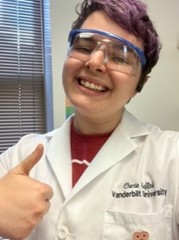 How did you discover the EV field and incorporate it into your research? How did you discover the EV field and incorporate it into your research?
I study YRNAs, which are noncoding RNAs that can function to activate toll-like receptors and scaffold proteins together. YRNAs are secreted in EVs, and immune cells can differentially secrete YRNAs during inflammation. I am currently investigating how macrophages package and export YRNAs in EVs.
I was attracted to this field because I love learning about how immune cells communicate, and EV communication in the immune system is such an exciting prospect for me. I also like watching this new field blossom from an inside perspective. I’ve attended seminars and conferences where researchers discuss how to define an “extracellular vesicle” whether it be by size, surface marker, or biogenesis pathway. I’ve watched researchers discuss whether particular proteins are packaged into EVs or if certain types of EVs even exist. The EV field is philosophical, unique, and exactly where I want to be.
Why did you join ISEV and what are your thoughts on how ISEV might help you to address any challenges?
I joined ISEV so I can connect with EV researchers from around the world. Getting to hear about other members’ research and their perspective on my research helps me be a more rigorous and well-rounded scientist. This year at the ISEV conference, I got to talk to the researcher whose YRNA research is foundational to my thesis project!
In what way have collaborations with other groups or with industry impacted on your EV studies?
While I am still early in my career, the EV research team at Vanderbilt has been fundamental to my success. Our Center for Extracellular Vesicle Research has shared technologies and resources that I use in my project. We also have seminars and retreats that bring together our EV community so we can share our discoveries and challenges.
Do you plan to continue with EV research in the future and if so what questions would you like to pursue?
While I don’t know what the future holds for me yet, I want to learn everything there is to know about YRNAs and why they are packaged in EVs. What cells differentially secrete EV-bound YRNA during disease states? What cells receive EV-bound YRNA, and how do EVs affect recipient cells? YRNAs are conserved in all vertebrate mammals, and even exist in bacteria and insects. Why are they so highly conserved? If only I had three more sets of arms.
What do you think is the most exciting thing in the future of EVs?
The most exciting thing about the future of EVs is the plethora of possibilities for the field. I love talking with my PI and my thesis committee about prospective functions YRNAs may serve inside the cell and as an EV cargo. At Vanderbilt, I have watched my colleagues research the ways in which EVs play a role in cancer, allergic asthma, and cellular stress. Right now, the EV field is ever-changing and full of potential. There is so much left to discover!
How do you see your career progressing over the next 5 to 10 years?
While I am still exploring career options, my long-term goal is to be a science communicator. My favorite part about science is discovering new stories to tell. In addition to presenting my own research, I also do some science writing for Vanderbilt’s newspaper and volunteer at Nashville’s science museum. I love getting other people excited about science! So, I want to make my favorite part of science a full-time career. Whether it be through the New York Times or Twitter, I want to communicate science to both expert and non-expert audiences.
Shruti Jain
 How did you discover the EV field and incorporate it into your research? How did you discover the EV field and incorporate it into your research?
I am currently in the last stages of my PhD research where I have mostly been looking at glycosylation changes in cancer and their use as diagnostic biomarkers within the Biotechnology unit at the University of Turku in Finland. I was introduced to the EV field quite recently when Dr Janne Leivo, a PI in the Early Cancer Diagnostics research group, was also working with EV glycosylations and their potential role in the detection and monitoring of cancer. It is quite exciting to see the remarkable potential of EVs as a non-invasive and accessible source of valuable information about cancer.
One of the main obstacles in EV research is the development of standardized methods for isolation, characterization, and analysis. EVs are incredibly diverse in their composition, size, and surface markers, and this heterogeneity poses challenges in establishing robust and reproducible techniques. Additionally, the identification of specific cancer-associated biomarkers within EVs requires extensive validation and verification studies to ensure their clinical utility. We are working towards overcoming these challenges with our technologies and novel assay concepts by combining different biomarker types in a single assay.
Why did you join ISEV and what are your thoughts on how ISEV might help you to address any challenges?
ISEV plays a crucial role in facilitating scientific discussions, organizing conferences, and promoting standardized methodologies for EV research. Through these initiatives, ISEV offers a wealth of resources and opportunities for me to stay updated on the latest advancements in the field and contribute to the collective understanding of EVs in cancer biology.
Addressing challenges in cancer biomarker research, such as EV isolation techniques, characterization methods, and validation of biomarkers, can be accomplished through the collaborative efforts and expertise-sharing facilitated by ISEV. The workshops and networking events have been particularly valuable for connecting with other researchers struggling with the same problems.
In what way have collaborations with other groups or with industry impacted on your EV studies?
Working with other research groups has allowed us access to complementary techniques and technologies that enhance the scope and depth of our EV studies. For example, the Finnish Society of Extracellular Vesicles (FISEV) has helped us to network here in Finland where we have a small but very active community of EV researchers. As our group is situated in the interface of basic and translational research, we collaborate both with clinicians and basic research groups interested in EVs. The clinical experts we work with have been crucial for our research, as validation of new biomarkers requires well-defined and large patient cohorts.
The active collaborations with diagnostic industry will also be important to facilitate the transition from bench to bedside by highlighting the potential commercialization and clinical implementation routes for the EV-based technologies.
Do you plan to continue with EV research in the future and if so what questions would you like to pursue?
I attended my first ISEV annual meeting this year (2023) in Seattle and enjoyed being part of the passionate and vibrant community of EV researchers. If the opportunity presents, I would like to continue and remain a part of this community. EVs have immense potential in revolutionizing cancer diagnosis, prognosis, and treatment monitoring, and there are still numerous intriguing questions that can be pursued. It would be interesting to further explore the role of EV surface markers as potential biomarkers for precise cancer subtyping and stratification. Validating these markers in large patient cohorts and assessing their clinical utility would be crucial steps in translating EV research into the realm of personalized medicine.
What do you think is the most exciting thing in the future of EVs?
The future of EVs is thrilling due to their potential to transform diagnostics and therapeutics, leading to personalized medicine approaches and significantly improving patient outcomes. Continued research and innovation in the field will undoubtedly bring forth new discoveries and applications, shaping the future of healthcare.
How do you see your career progressing over the next 5 to 10 years?
It’s hard to predict where the future leads. I’m currently wrapping up my PhD and preparing for my defence before the end of this year. Meanwhile, I’m also looking for opportunities to pursue after my PhD. I would like to undertake a postdoctoral research position in diagnostics/therapeutics keeping more towards the translational side of research. For my future, I envision a career path that combines academia and industry.
April 2023 Member Spotlight
Christina Bajo
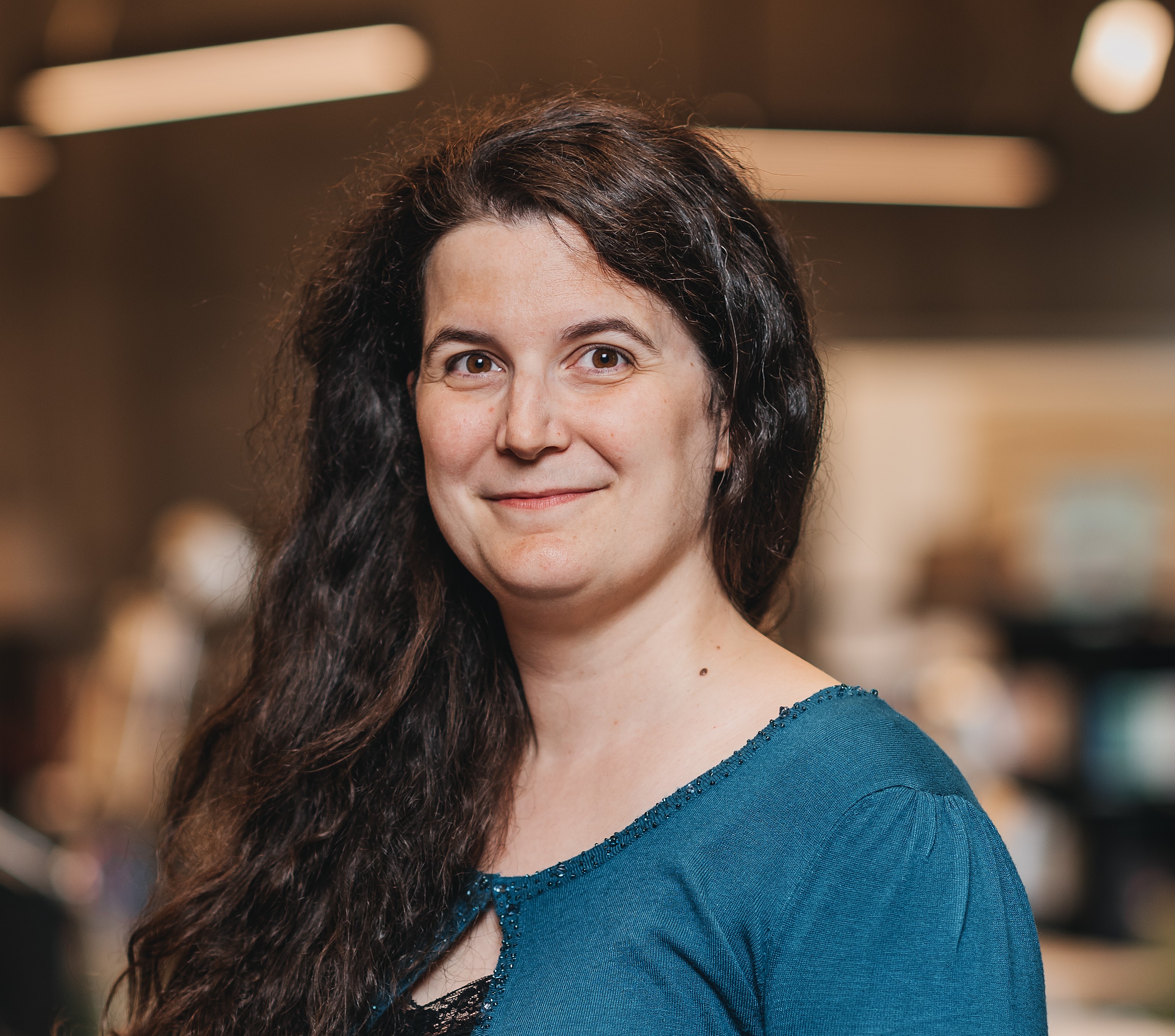 How did you discover the EV field and incorporate it into your research? How did you discover the EV field and incorporate it into your research?
I entered the extracellular vesicle (EV) research field several years ago when Dr. Line, the head of the Cancer Biomarker and Immunotherapy Group, started a new project focussed on prostate cancer-derived EV content, functions and applications. I joined as a PhD student. to research potential RNA EV signatures released by prostate tumor cells that can serve as diagnostic and prognostic biomarkers.
Currently, I am working in a more interdisplinary area. Last year I joined the novel Organ-On-Chip in EV group led by Dr. Abols. In collaboration with Cellbox Labs, we are developing new microfluidic devices to isolate EVs with minimal pre-processing. We are also studying EV interactions and communication using different organ-on-chip models.
Tell us a little about your EV research, what were some of the challenges and your thoughts on how ISEV might help to address any obstacles to your research?
I have been involved in the search for potential EV-RNA biomarkers as prognostic and diagnostic tools for prostate cancer. The biggest obstacle to my EV studies has been EV recovery optimization. My research involved the isolation of EVs from different human biofluids (plasma and urine), which was itself quite challenging since the starting material could be quite scarce. It took some time to optimize and develop the optimal protocol to isolate the maximum amount of EV RNA from the samples.
Recently, I have been involved in developing a new microfluidic device using bifurcated asymmetric field flow fractionation, which allows the isolation of EVs in a gentle and efficient manner from large volumes of each sample with minimal or no pre-processing. The main challenge, has been developing the chip to isolate specific EV subpopulations.
ISEV has dedicated task forces for both urine and plasma, and they are preparing to publish revised MISEV guidelines. I am optimistic that these updates will help address the issues that myself and others face.
What more do you think ISEV could support the global network of EV researchers?
I believe that ISEV has great potential, and the work done by the education team and task forces is truly commendable. In my opinion, the ISEV community would benefit from specific short-term mobility grants for PhD/early career scientists, allowing exchange between different EV labs. Additionally, it would be a good idea to have a Young/Early Career Conference or a session at the Annual ISEV Meeting, where young researchers can showcase their work and receive advice from renowned scientist in the field. It would also be helpful to have a platform directly related to ISEV, such as a forum, where researchers can share ideas or experiences related to EV issues. Having a journal section where researchers can publish or discuss negative results regarding EV topics would also be valuable. In my opinión, these actions would strenghten the ISEV community, increase collaboration between labs, and promote research.
Do you plan to continue with EV research in the future and if so, what questions would you like to pursue?
In one word, yes. Research on EVs has been a rapidly growing area in recent years, with the potential to revolutionize our understanding of cellular communication and disease pathogenesis. So, in the future, we would like to explore how immune system-released EVs affect cancer and the microbiome using organ-on-chips models. This approach provides a platform to investigate the dynamic interplay between immune cells, cancer cells, and the microbiome, enabling key mediators and pathways involved in disease progression to be identified. Understanding the role of EVs in these processes may lead to the development of novel therapeutic approaches that target specific EV-mediated pathways to improve cancer outcomes or maintain a healthy microbiome.
How do you see your career progressing over the next five to ten years?
I am uncertain about what future holds, but I envision pursuing a career including both research and education. I am primarly focussed on research, but I also believe it is important to contribute to society by educating future generations, so they can continue to learn and make progress.
In what way have collaborations with other groups or with industry impacted on your EV studies?
Unfortunately, I was unable to attend ISEV2022. However, I did attend the Blood EV workshop held in Helsinki last September, which was an excellent experience. The open-discussion format allowed individuals at any stage in their career to discuss their main concerns regarding blood EVs and collaborate on solutions.
March 2023 Member Spotlight
Charles Lai
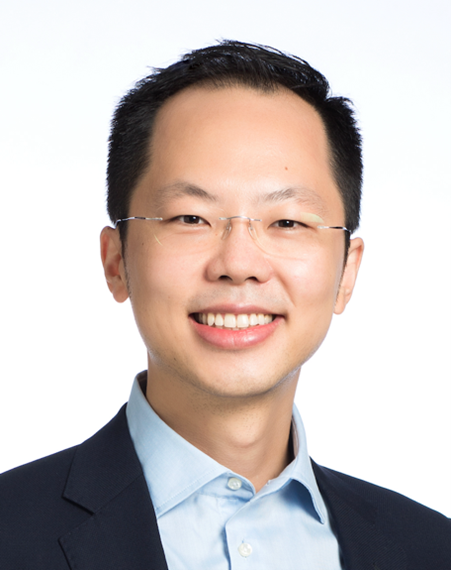 How did you discover the EV field and incorporate it into your research? How did you discover the EV field and incorporate it into your research?
During my PhD, I studied gap junction-mediated intercellular communications, which fascinated me as a relatively direct and intuitive mechanism. Since 2010, I have studied EVs as another form of cell-to-cell communication during postdoctoral training in Dr. Xandra Breakefield’s group at Massachusetts General Hospital and Harvard Medical School in Boston, USA. It has since been an exciting journey, as the implications of EV research have extended into almost every biological field imaginable.
My research is curiosity-driven, but always relates to real world applications. In the early days of EV research, many of us began with EV isolation by differential centrifugation followed by nucleic acid extraction to understand their contents; EV purification and characterization methods have since expanded significantly. As critical EV-RNA findings were being made, I became curious as to how nanosized EVs circulate within organisms: where and how do EVs travel to exert biological function(s)? More than a decade later, my research continues to focus on answering these important questions.
During my postdoctoral research fellowship, I developed one of the first EV imaging reporters for subcellular (PalmGFP and PalmtdTomato) and whole animal (GlucB) EV tracking. My first research group developed the first bioluminescence resonance energy transfer EV reporter (PalmGRET) in 2015, which enabled multi-resolution tracking from living animals to individual cells. Concurrently, my team and I employed established PalmGRET to elucidate organotropism and the dynamic biodistribution of tumor EVs at the level of organ systems. More recently, we found that malignant breast cancer cells release both big (>200 nm diameter) and small (<200 nm) EVs with distinct biodistribution profiles while individually promoting tumor growth in vivo. We also openly shared EV reporters (mostly via Addgene), and are fortunate to collaborate and apply them with many labs from around the world; I have met many such groups at ISEV meetings, starting from the very first ISEV annual conference in Gothenburg, Sweden in 2012!
EV research is both fun and challenging as it relies on partnerships between scientists in multiple disciplines, ranging from biology and chemistry to engineering. A typical EV study involves multiple protocols, including cell culture, EV isolation, characterization, detection and defining terminology – each of which demands precise experimental design while each aspect continues to be optimized and updated. In other words, EV study is context-dependent and not at all straightforward, as there is no single perfect EV study protocol; indeed, this remains one of the main challenges in EV research. ISEV plays a pivotal role in helping solve this conundrum by facilitating international and domestic conferences for researchers to share and discuss their latest findings (and mistakes), as well as by publishing position papers to serve as general guidelines. We’ve only just begun to appreciate the intricacy of EV-mediated communication, and I am dedicated to helping to resolve the complex EV networks in living organisms.
Dr. Charles Lai is currently an Associate Research Fellow at the Institute of Atomic and Molecular Sciences, Academia Sinica, Taiwan. Prior to this, he was an Assistant Professor at the National Tsing Hua University in Taiwan, an Instructor at Harvard Medical School, and an Assistant in Neuroscience at Massachusetts General Hospital, USA.
February 2023 Member Spotlight
Wanessa Fernanda Altei
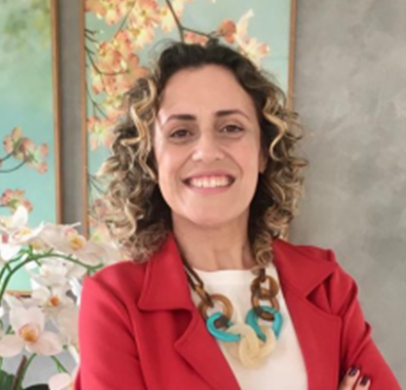 How did you discover the EV field and incorporate it into your research? How did you discover the EV field and incorporate it into your research?
I discovered the EV field when I started my postdoc. On that occasion my work involved the isolation and characterization of EVs from triple-negative cancer cells, to further apply them to functional studies in vitro. Specifically, I have investigated the role of the adhesion receptor integrin αvβ3 on EVs.
Currently, I work at Barretos Cancer Hospital (Sao Paulo – Brazil) as an associate researcher. I am interested to investigate the role of EVs in cell communication after radiotherapy by analyzing blood-derived EVs isolated from cancer patients, and also by in vitro studies. Considering the exponential development of radiotherapy techniques and machines in the last decades, our main interest is to investigate different radiobiological responses after different dose schemes, considering modern treatment approaches. The study of blood-derived EVs is challenging, because of the complex composition of blood, and the high number of non-EV components that we can co-isolate.
The ISEV talks and discussions have helped me in the last months to get information about some important issues that I have faced in the last couple of years.
My expectations for the future would be the expansion of EVs studies in Latin America, in a way that EV researchers from this area could be more visible in big events in the field.
In my opinion, EV research is an extraordinary field and brings great opportunities despite the challenges. I see great potential for EVs as biomarkers for diagnosis and treatment responses, besides the whole range of drug delivery systems that are a possibility by employing EV engineering.
I am starting to develop my research group focused on radiobiology studies, and in the next five to ten years my goal is to understand whether EVs are important players in radiotherapy, building on the work of researchers in recent papers.
Collaborations are fundamental requirement ofithis field, mainly because of the challenges of using appropriate techniques for EV studies. Considering the expensive infrastructure involved, and the high demand for equipment, from image acquisition systems to nano analyzers, I see collaborations as a key way way to make comprehensive investigations.
I did not go to ISEV2022, and unfortunately, I could not participate in any big event in the area in 2022, but I followed some discussion points such as the classification and nomenclature of EVs and the new MISEV.
Maja Kosanovic
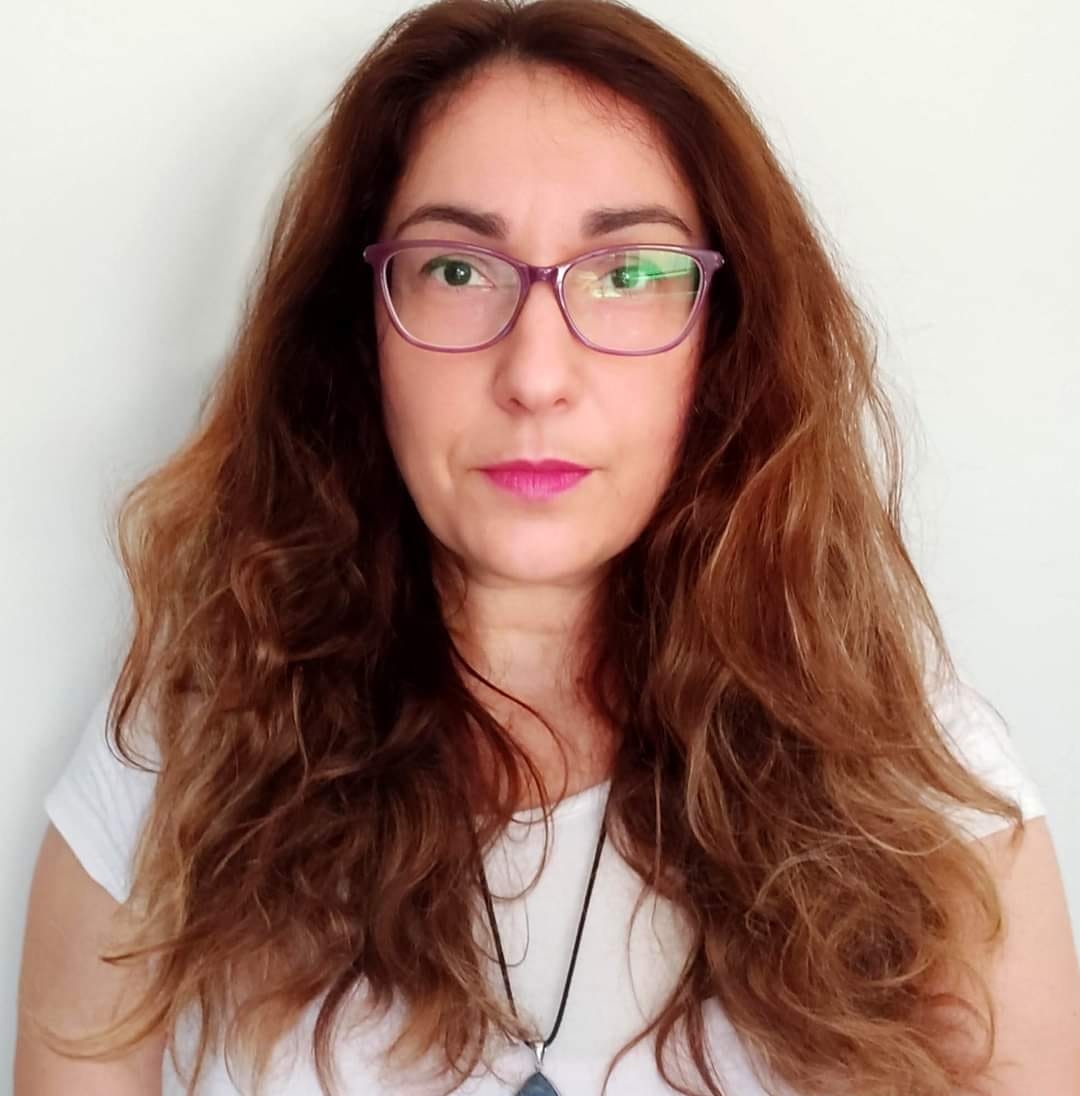
How did you become interested in the EV field and begin to incorporate it into your research?
I first came across EVs when I was sent to the “wrong” meeting in 2011! As a young scientist I worked on glycosylation of tumor markers and we had a small collaboration with colleagues who were members of the COST Action focusing on urinary proteomics. They invited me to one of the actions’ meetings. Since our main research did not involve either proteomics nor urine per se (only one tumor marker in urine), I always joke that it was a “wrong” meeting. However, that meeting turned out to be a decisive moment of my career. There, in the basement meeting room of the Hotel Melia Castilla in Madrid, I first heard about EVs and immediately noticed there were many questions - and almost no answers. So, I figured, this must be something very interesting! Upon returning, it took me almost three months to persuade my, now former, boss to let me try to isolate EVs – but once I started the research, I couldn’t help falling in love with the field.
Can you tell us a little about your EV research, some of the challenges and your thoughts on how ISEV might help to address any obstacles to your research?
In the last 11 years I have come a long way from trying to overcome contamination issues in the isolation of urinary and amniotic fluid EVs, resulting in the introduction of methods, such as Tam-Horsfall protein (THP) precipitation and ion-exchange chromatography to EVs research, through their glyco-characterization, to what is now my main topic: investigating inter-kingdom communication by EVs and exploring helminths’ EVs immunomodulatory potential as a basis of novel therapies. However, there is a long way to go to reach our aim of EV-based therapy. As the most prominent challenges, not only for our research, I see two issues: first, defining the exact mechanism of action of EVs, i.e. identification of active molecules in the vast complexity of EVs (comprising both heterogeneity and composition), which will most probably turn out to be a combination of molecules, and second, targeting therapeutic EVs to enhance their effect and decrease unwanted interactions.
What more do you think ISEV could do to support the global network of EV researchers?
I believe the community of EVs researchers would benefit from more open discussions on the topic of gaps in the field and possible ways forward, whether during ISEV annual conferences (which should be shared beyond on-site participants) or on some other platform.
Do you plan to continue with EV research in the future and if so, what questions would you like to pursue?
Yes, of course! Being a witness of how the EV field grew in the last decade, both in the knowledge about EV biology and in development of fascinating new techniques, and also being aware of so many inspiring challenges and potentials ahead, my initial fascination with EVs grew stronger along the way and now I see myself exclusively as an EVs researcher. It also led me to now be the first president of the Serbian Society for Extracellular Vesicles, SrbEVs. Thus, I believe EVs will be my research interests till the day I retire. Although my EV focus might change in the future, at this point, the most interesting line of our research that lays ahead is trying to define active molecules in helminths’ EVs. The next big task, not just for our research but globally, I believe, would be targeting therapeutic EVs, whether natural or artificial ones. I think this step is a crucial to the wide clinical application of EVs.
In what way have collaborations with other groups or with industry impacted on your EV studies?
I strongly believe that collaborations provide unsurpassed opportunity not only to work on the same topic, share samples, techniques and model systems, but even more valuable, to exchange, in an open manner, ideas, opinions and visions with colleagues who inevitably become your friends, and to become enriched and grow from the exchange of cultures, both in the workplace and more generally. ISEV, along with the COST Action European Network on Microvesicle and Exosomes in Health and Disease (ME-HaD) played an immense role in providing me with the opportunity to get to know many colleagues in the field, so today I have collaborations with some of the most prominent EV researchers and the opportunity to work on exciting challenges.
Did you go to ISEV2022 or to any other recent meeting in which EV research was discussed and if so, was there a particular highlight for you?
I attended the last ISEV meeting in Lyon, in 2022 and had a wonderful time. Apart from many interesting insights, after missing a couple of ISEV annual meetings due to the pandemic and other reasons, meeting all these dear people in person again was the highlight of the meeting for me. As a “cherry on top”, my illustration of “renal proximal tubular epithelial cells as targets for therapeutic EVs” was elected the best in the category of interpretative images from seniors, which was very nice, since scientific illustration is a hobby of mine.
January 2023 Member Spotlight
Lisette Retana Moreira
 How did you discover the EV field and incorporate it into your research? How did you discover the EV field and incorporate it into your research?
The first time I heard about extracellular vesicles (EVs) was in 2011, during my master`s degree in Valencia, Spain. Four years later, during my PhD in Granada, I had the opportunity to learn about EVs and focused my research on EVs secreted by the intracellular protozoan parasite Trypanosoma cruzi, the etiologic agent of Chagas disease or American trypanosomiasis.
After this enriching experience, I incorporated my new knowledge into my job at the University of Costa Rica and started a new line of investigation into EVs secreted by parasites, which is one of the strongest fields of research in our group nowadays.
Tell us a little about your EV research, what were some of the challenges and your thoughts on how ISEV might help to address any obstacles to your research?
Our group is currently working on EVs secreted by free-living amoebae (FLA) with pathogenic potential, more specifically the EVs of Acanthamoeba and Naegleria fowleri, protozoan microorganisms that are not very commonly studied but produce fatal cases of encephalitis and meningoencephalitis. We have performed a complete characterization of the EVs secreted by these amoebae, including evaluation of their roles, which are mostly related to pathogenesis. We are keen to analyze the potential of these vesicles as biomarkers for these infections, so that we can develop a rapid and accurate diagnostic tool that could lead to an early treatment.This is especially important as these infections have high mortality rates and diagnoses are usually performed post-mortem. Recently, we have also started working in employing EVs as drug-delivery vehicles for the treatment of these infections.
During our work we have faced some important challenges, mostly related to starting a new line of research and all of the standardization procedures that were necessary, which was performed during the CoVID-19 pandemic. Of course, I can`t forget to mention the intrinsic challenges of working with EVs!
What more do you think ISEV could support the global network of EV researchers?
I consider ISEV offers great support to the global network of EV researchers. However, maybe more virtual courses or possibilities of short internships could be offered, with lower participation fees, special fees for students and scholarships would help to promote the participation of more students and young researchers, who would like to continue working in EVs and expand the network.
Do you plan to continue with EV research in the future and if so, what questions would you like to pursue?
Yes, while working in this field I have found a lot of questions that need to be answered. In fact, I will start a short postdoctoral fellowship on EVs this January!
As a microbiologist specializing in parasites, I would like to continue working on EVs secreted by these organisms and the possibility of employing them as biomarkers of disease, to try develop rapid and accurate diagnostic tools. I started my EV journey with Trypanosoma cruzi, continued with Acanthamoeba and Naegleria fowleri and I am now collaborating in the isolation and characterization of EVs from different Plasmodium species and different cell lines. There are so many applications and interesting topics in the EV field that I wish to continue my career in this line and get more experience that I could share with students and other researchers.
In what way have collaborations with other groups or with industry impacted on your EV studies?
I`ve always tried to work in collaboration with different research groups (no matter if they are specialized or not in EVs) as collaborations support multidisciplinary research, in which different areas of expertise work together. I also consider myself very lucky as I have both national and international advisors who always give valuable feedback for the research projects I want to start in Costa Rica. As I work at a university, collaboration with international groups is considered very important.
Did you go to ISEV2022 or to any other recent meeting in which EV research was discussed and if so, what was a highlight for you?
Yes. Since 2020 I have been attending ISEV meetings (two virtual meetings and one in-person meeting). During the ISEV 2021 virtual meeting I presented a poster about structural and mechanical characterizations of EVs from two protozoan microorganisms using atomic force microscopy and force spectroscopy, and during ISEV 2022 in Lyon, France, I presented a poster about the first characterization of EVs secreted by Naegleria fowleri. During this meeting,I also participated in a task force reunion which allowed me to meet the very nice researchers from whom I have learned a lot and I could collaborate with.
December 2022 Member Spotlight
Vivian Nguyen
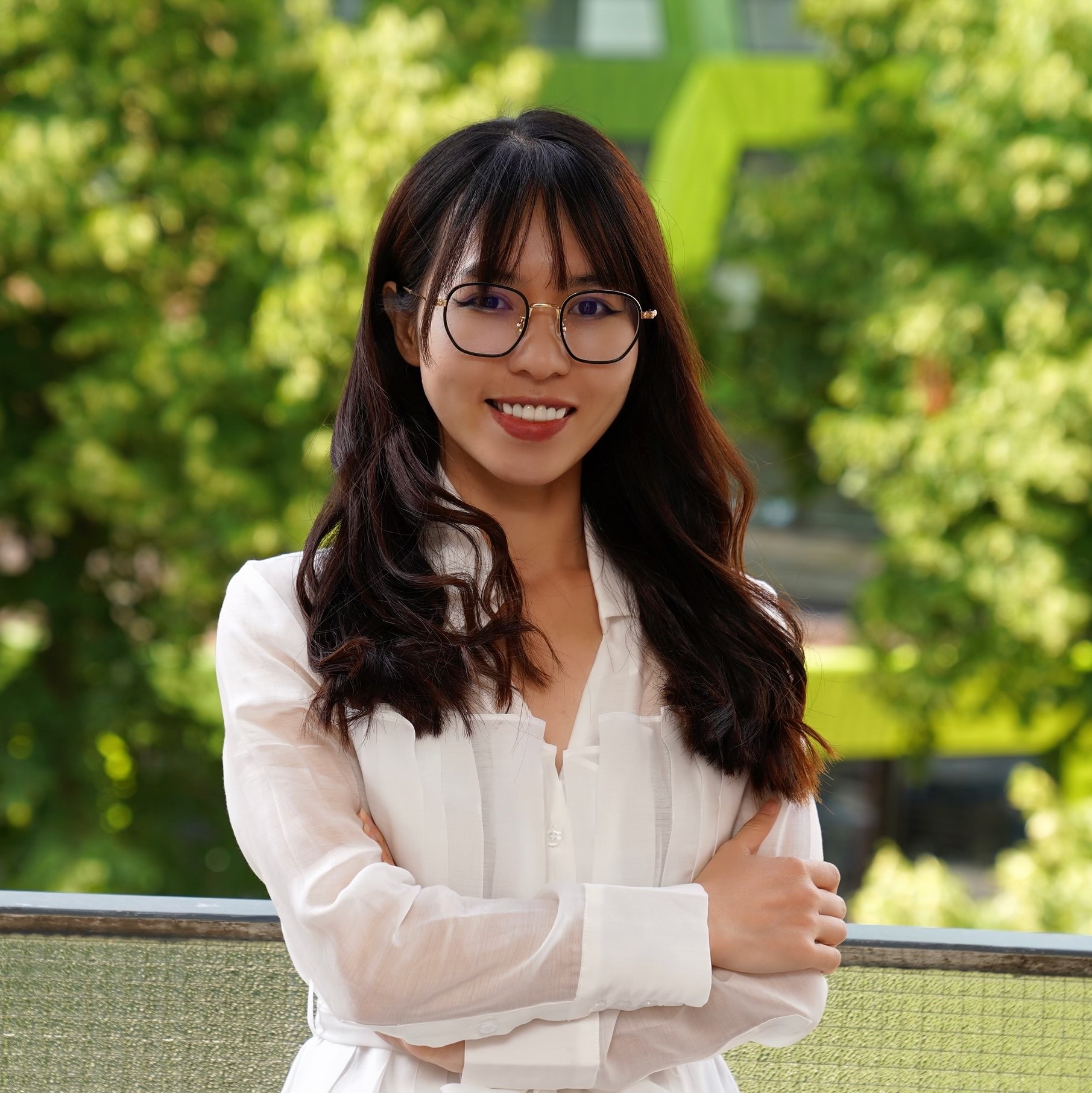 Tell us a little about your EV research, what attracted you to this field and any obstacles to progress? Tell us a little about your EV research, what attracted you to this field and any obstacles to progress?
My PhD study explores the biodistribution and therapeutic effects of small EVs in multiorgan-on-a-chip models particularly focussing on kidney injury. We hope to bring the application of EVs from bench to the bedside of the patients.
It is fascinating to me that EVs can be secreted by all cell types. Once secreted, EVs then travel and communicate with nearby or distant cells, and actively influence local processes. Despite an explosion of interest in EVs, many fundamental insights into their biological functions are still lacking. The importance of the release of cargo into the extracellular environment is recognized. But still, the knowledge and application of EV in medical research are uncertain.
Why did you join ISEV and what are your thoughts on how ISEV might help you to address any challenges?
ISEV is the largest community of extracellular vesicle researchers in the world, so I had no doubt this community is the leader in advancing EVs research. ISEV is a great place for me to get access to dedicated ideas, advices, support, training, etc., also to meet and learn from role models in the field.
In what way have collaborations with other groups or with industry impacted on your EV studies?
Collaborations have had and continue to hold a very important impact on my EV research, for example, in terms of verifying the efficacy and reproducibility of the technology that we have currently applied. Collaborators also give advice and feedback on the data we obtain through meetings and discussions. This is the part I like the most about doing research.
Do you plan to continue with EV research in the future and if so, what questions would you like to pursue?
EV science has always been my plan for academic research. This has always fascinated me. My purpose at this moment is still straight ahead to whether or not we can verify the effects of small EVs on kidney injury related diseases, and get them off the shelf and apply them to patients.
What do you think is the most exciting thing in the future of EVs?
The standardized protocols, functional assays and transparent reporting, plus education about EV production. These may sound very practical, but I think these are the most exciting things, as I want to see for certain that everyone follows the guidelines.
What do you think is the most exciting thing in the future of EVs?
It is difficult to anticipate the future, as I often fail to predict the future of my experiments, but I hope I will be able to achieve my PhD and continue to progress my research study in the EV field.
November 2022 Member Spotlight
Aida Hansen
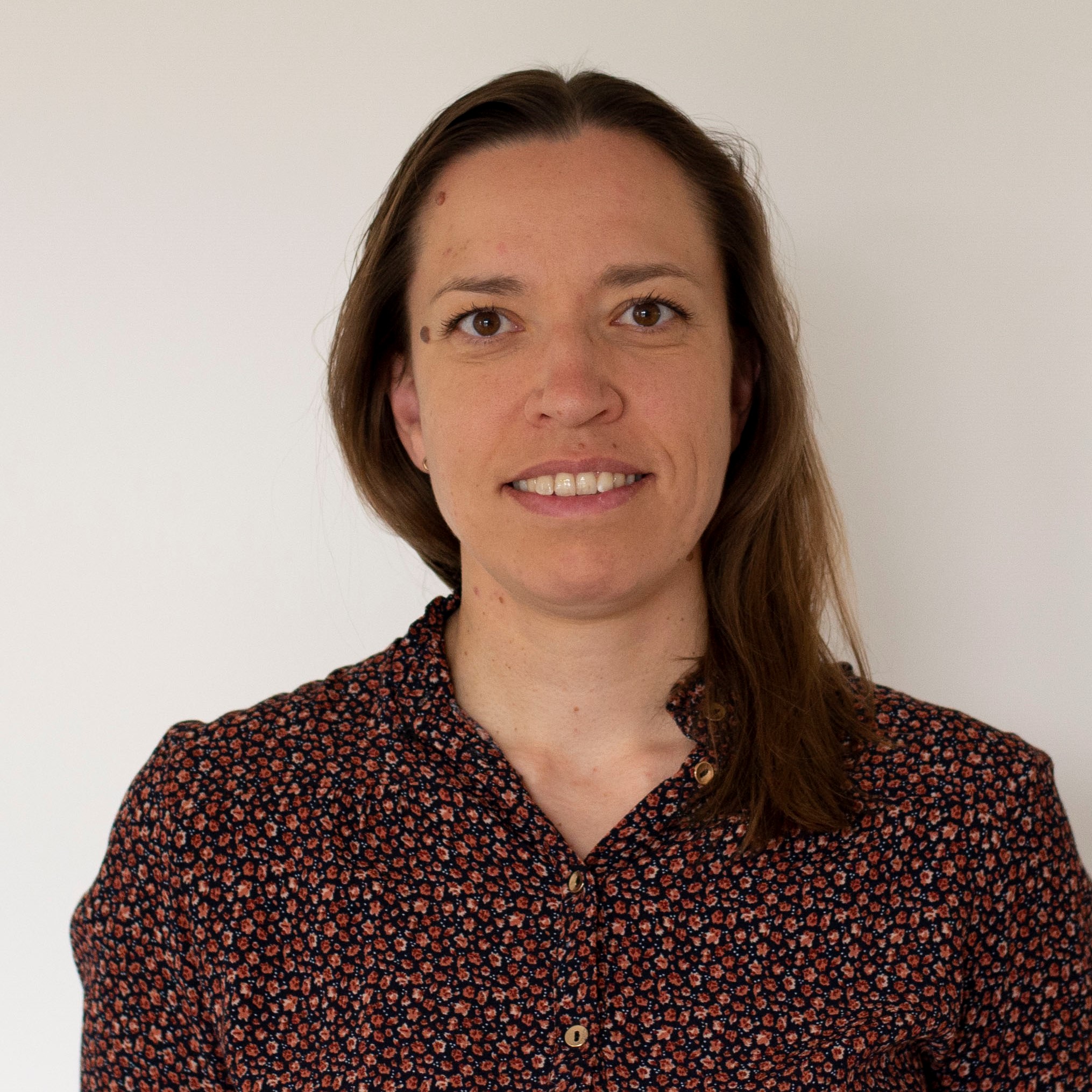 Tell us a little about your EV research, what attracted you to this field and any obstacles to progress? Tell us a little about your EV research, what attracted you to this field and any obstacles to progress?
My main research interest is on the role of EVs in regulating immune responses, in particular within the tumor microenvironment. In my current project, I have been studying T cell derived EVs and how they modulate the function of antigen-presenting cells. I have always been very fascinated by the dynamics of the immune system and how it is regulated in cancer. In this regard, I was very intrigued by the capacity of EVs to provide signaling via distinct molecules, simultaneously. This whole new way of thinking about cellular signaling, as a whole package of distinct molecules delivered at once, adds a new level of complexity to the mechanisms by which the immune system is regulated. I hope that my research on EVs in the future will elucidate parts of this complexity.
Why did you join ISEV and what are your thoughts on how ISEV might help you to address any challenges?
When I started working on EVs as a postdoctoral fellow five years back, there were very few people in my department working on this. Therefore, I joined ISEV to become part of a larger community of EV researchers. As a junior researcher relatively new to the field of EVs, I find it really helpful to have access to all the resources that ISEV provides, so that I can obtain more knowledge about EVs. I also really enjoy the weekly EV-clubs that ISEV offers. A busy week in the lab does not always give much time for reading, so I think this is a great opportunity to stay updated on the latest EV research. It is also a really good way to learn about other aspects of EV research, not directly related to my specific area of interest.
In what way have collaborations with other groups or with industry impacted on your EV studies?
Collaboration with other groups have been really essential in my EV studies, especially because I started working on EVs in a lab that did not have EVs as the main focus area. I got a lot of technological support from collaborators that was important to me getting started on investigating EVs. But most importantly to moving my studies forward, has been all the discussions with people from other labs, and also at both national and international EV- meetings.
Do you plan to continue with EV research in the future and if so, what questions would you like to pursue?
In my future research on EVs, I am very interested in exploring the role of EVs from both immune cells and cancer cells in shaping the tumor microenvironment to become highly immune suppressive. I would also like to pursue the questions around the heterogeneity of EVs secreted from a certain immune cell types and how the secretion of distinct EVs from the same parental cell may be regulated. Finally, I am very interested in how we can utilize EVs from certain immune cells to overcome immune suppression in cancer.
What do you think is the most exciting thing in the future of EVs?
One of the things I find very exciting in the future of EVs, is the technological development to improve the investigation of EVs at the single-EV level, to further unravel the heterogeneity of EVs. I am also very excited about the future use of EVs as therapeutics in the clinic.
Dima Ter-Ovanesyan
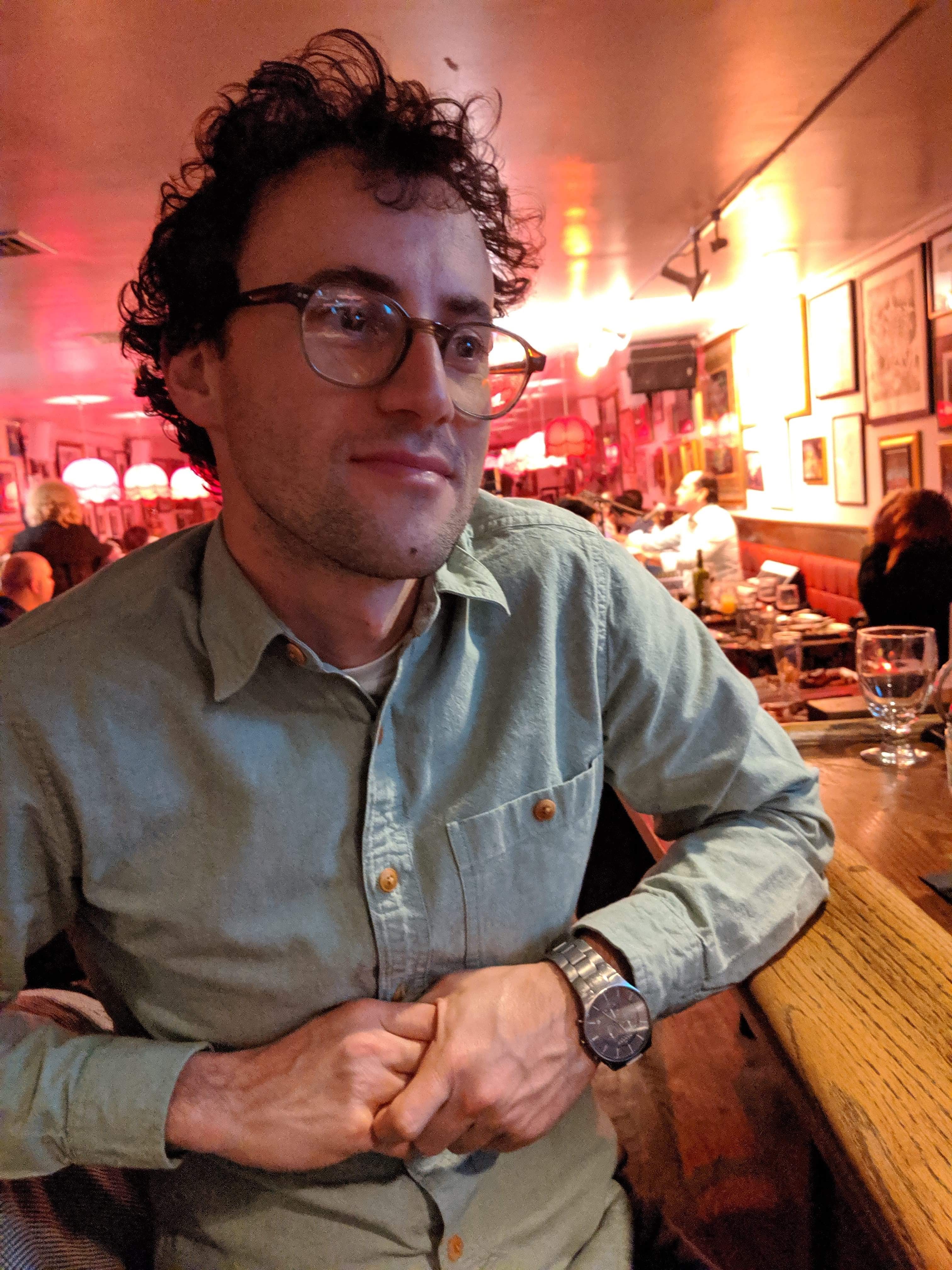 Tell us a little about your EV research, what attracted you to this field and any obstacles to progress? Tell us a little about your EV research, what attracted you to this field and any obstacles to progress?
I got originally excited about EVs when I was an undergrad at MIT and came across the first papers showing RNA in EVs from the Lotvall and Breakfield groups. The prospect of intercellular RNA communication was very exciting for a budding RNA biologist like myself. After college, I decided I wanted to study EVs but there were very few labs at the time working on EVs. I decided to go to France for the summer to work in Clotilde Thery’s lab at Institut Curie. I then spent the subsequent year as one of the first employees at a start-up company started by Johan Skog called Exosome Diagnostics, which was developing EVs-based cancer diagnostics. After that, I started a PhD at Harvard and looked for labs where I could study EV RNA. I ended up being co-advised by George Church and Aviv Regev.I started characterizing EV RNA in cell culture systems and then moved to using EVs as biomarkers from human biofluids. I stayed on after my PhD to finish up some projects and also expand on others.
In terms of obstacles, there were many obstacles… The field of EVs is a young field even today, but was even more so when I started. This is exciting, and one of the things that drew me to the field, because there are many questions that are wide open. But this is also frustrating, because you have to often start from scratch and develop new tools or frameworks for studying EVs, since even basic questions (how do we measure EVs?) are not established.
Why did you join ISEV and what are your thoughts on how ISEV might help you to address any challenges?
I joined ISEV after attending the International Workshop on Exosomes at the Institut Curie in Paris in 2011. It was at this meeting that Jan Lotvall and others proposed starting ISEV. I think I am one of the few people who then attended the first ISEV conference in Gothenburg in 2012 and all of the subsequent ISEV meetings since then. If only there was a perfect attendance award… The annual ISEV conference is the biggest EV meeting, so it has been very useful for keeping up with the field. I’ve also met many great people at ISEV conferences that have become friends and collaborators.
In what way have collaborations with other groups or with industry impacted on your EV studies?
I’ve always worked in collaboration with several labs, having multiple advisors, and working with other labs as well. Collaboration is the best way to bring together different areas of expertise. Collaboration with industry has also been very useful. We are working with companies now that are making custom antibodies for cell type specific proteins of interest, for example, those that we’ve identified on the surface of EVs.
Do you plan to continue with EV research in the future and if so, what questions would you like to pursue?
In matters of choosing research questions, I try to listen to my heart. For now, the heart wants to continue isolating and characterizing EVs from various biofluids. More broadly, doing EV research has also exposed me to fields and techniques that I wouldn’t have encountered otherwise.
What do you think is the most exciting thing in the future of EVs?
Well, we still have the main question: why do cells make EVs and what do EVs do? I would venture to say we still don’t have an answer to this question, and it’s clear that it will take a long time to answer, because there isn’t a simple answer. I continue to be excited by the prospect of using EVs as biomarkers for various diseases, which is one of the main things I am working on now (trying to isolate neuron-specific EVs as biomarkers for neurodegenerative disease). I am also excited about questions pertaining to the relationship between EVs and viruses. For example, how much of EV biogenesis is mediated by proteins encoded by endogenous retroviruses?
October 2022 Member Spotlight
Barbara Adem
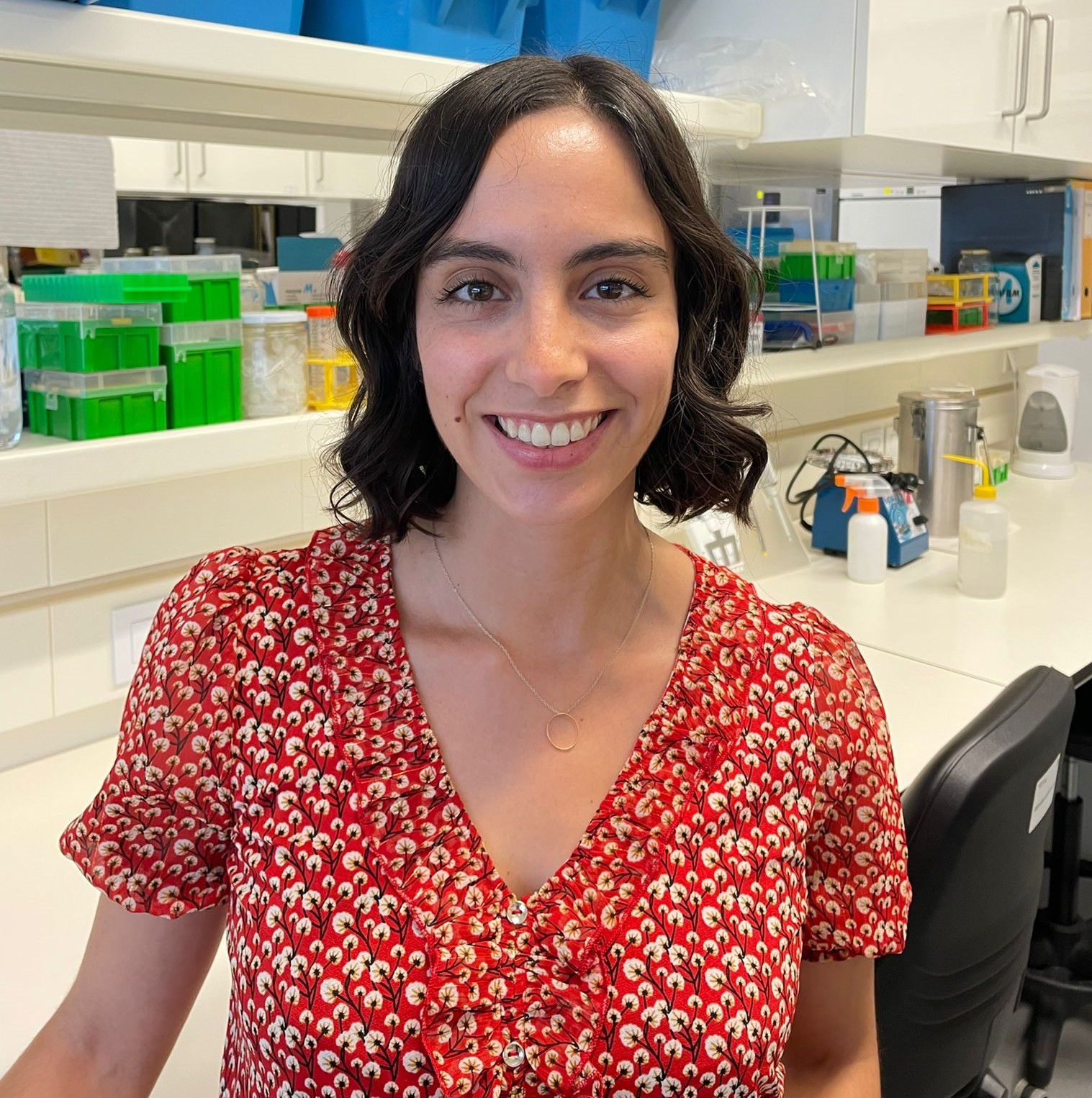 Tell us a little about your EV research, what attracted you to this field and any obstacles to progress? Tell us a little about your EV research, what attracted you to this field and any obstacles to progress?
My first contact with EV research happened 8 years ago when during my Master’s degree I attended a very engaging seminar led by Doctor Sónia Melo. Little did I know that she would mentor me through the EV field over the coming years as my PhD supervisor. At the time, I was astonished by how little was known about EVs and yet how these vesicles held such great promise in different ways. My line of research is focused on the development of new in vivo tools to address the biological contribution of EVs in the progression of pancreatic cancer. During my PhD I had the chance to design a new genetically engineered mouse model to trace EVs in vivo and I am focused on determining their biodistribution and possible biological roles in pancreatic cancer. Since our lab was one of the first ones to develop such tools, very little was described on how to analyze and interpret these models, making it quite challenging to optimize and standardize the detection of EVs using confocal microscopy. On one hand, naturally due to their size but mostly, due to their relative low abundance in some specific contexts.
Why did you join ISEV and what are your thoughts on how ISEV might help you to address any challenges?
Joining ISEV and attending ISEV meetings and workshops is not only a great opportunity to get acquainted with the latest developments in the field but most importantly, to share my research and to discuss my concerns and obstacles that I am facing with top experts. In this community, one can always count on the help of a fellow peer that has had similar questions/difficulties to surpass the latest hurdle in one’s work. I believe that by surrounding ourselves with EVs enthusiasts and forming collaborations our studies can more readily be taken to the next level.
Do you plan to continue with EV research in the future and if so, what questions would you like to pursue?
In fact, virtually all of my (short) research path has been focused on EVs. I can easily imagine myself continuing doing so for many years more as it looks like the EV field is only now emerging and there are so many topics and applications that can be pursued. However, I have not yet decided if this will be the case for my postdoc or if I will embark in a new professional challenge, perhaps with a little EV side project up my sleeve.
What do you think is the most exciting thing in the future of EVs?
I am overwhelmed by how rapidly the EV field has evolved in recent decades. The current burst of EV-related technology marks a new era in EV research, particularly in vivo. I believe we are on the verge of discovering new features of these vesicles in pathophysiology but, even more importantly, in standard physiological conditions. The basic knowledge that we are step by step gathering will empower the use of these vesicles in therapy, possibly broadening and tailoring its applications in the clinic. So, on a second thought I might continue my path on the exhilarating field of EVs.
Xinyi Pei
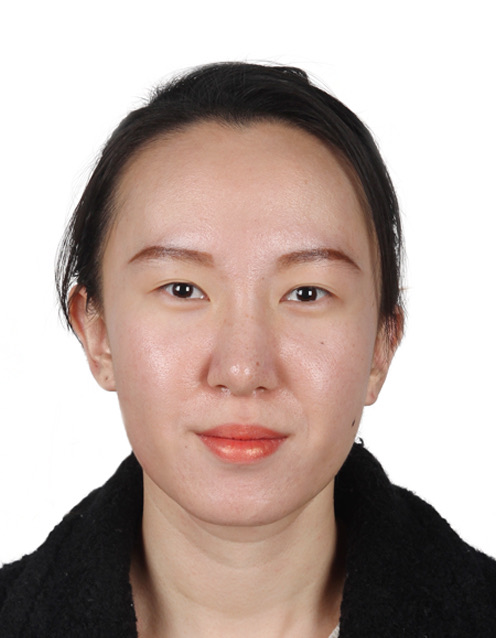 Tell us a little about your EV research, what attracted you to this field and any obstacles to progress? Tell us a little about your EV research, what attracted you to this field and any obstacles to progress?
My EV research is mainly about the effects of EVs released by picornavirus-infected cells on the function of immune cells. We know that EVs are very important for intercellular communication, by signaling via transferred proteins and RNAs. It’s intriguing that after virus infection, the non-enveloped RNA viruses can make use of EVs to transfer complete virus particles to other recipient cells, and therewith spread the infection. However, our findings indicate that the virus-induced EVs can also trigger antiviral/inflammatory cytokines to alarm the immune system.
One of the obstacles in our studies is that the virus-induced EVs are heterogenous, and that small technical variations in experiments may affect the composition of the isolated EV populations. Additionally, the immune cells we use are from different donors, which also means that we have inter-donor variation in immune responses. By tightly control conditions for EV production, we have found consistent effects of virus-induced EVs on immune cells.
Why did you join ISEV and what are your thoughts on how ISEV might help you to address any challenges?
I think ISEV is a very good platform to communicate with other groups from all over the world about progress, new ideas in EV research and possibilities for collaboration. During the ISEV2022 conference, I learned about the latest techniques for detecting and separating EVs, which may help us to purify our EVs more effectively. I remember oral presentation OS28.06 of ISEV2022 on new ways to separate lipoprotein and EV. We isolate EVs from serum-containing culture media, and EV preparations may be contaminated with lipoproteins, so it is important for us to be able to distinguish EVs from lipoprotein. ISEV also organizes journal clubs and seminars targeting specific fields of EV research, like work related to EVs in virus/bacteria infections or immunology, which is a very helpful way of quickly getting updated about progression in the field.
In what way have collaborations with other groups or with industry impacted on your EV studies?
We have been collaborating with virologists at our university for a really long time. In this close collaboration, we learned a lot about how virus infections affect EV production. This paved the way for our functional studies on how picornavirus-induced EVs contribute to the spreading of the virus and the effects of these EVs on immune cells.
We recently started a collaboration with a clinical group working on cardiomyocytes. Most of our previous studies were performed in standardly used tumor cell lines, and we want to know if EVs released by relevant infected primary cell types also have similar characteristics and functionality. I’m looking forward to seeing the results, since the effects on primary cells may more closely resemble the in vivo situation.
What do you think is the most exciting thing in the future of EVs?
I think the most exciting development in the EV field is their clinical applications. We know that there are more and more studies indicating that specific EV cargoes may be considered as biomarkers for diseases, and I think it’s a promising field to progress disease screening. In addition, engineered EVs might be used in the future as carriers for therapeutic drugs, but there are still many obstacles, such as how to target EVs to specific organs. In this respect, our work on virus-induced EVs can contribute to the understanding of how changes in EV composition affects their cell targeting and function.
September 2022 Member Spotlight
Stephanie Bollard
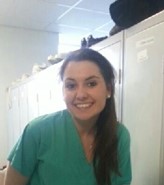
Tell us a little about your EV research, what attracted you to this field and any obstacles to progress?
I am a Plastic & Reconstructive Surgery resident and PhD candidate at University College Dublin in Ireland. My research investigates the role that EVs play in mediating the progression of the most aggressive skin cancer, melanoma. In clinical practice, our current prognostic indicators, such as tumour thickness, are often unreliable and fail to accurately predict patients who will have an aggressive disease course. There is a real need for more accurate ways to stratify patient risk, and aid in personalising treatment. As such, I was interested in the role circulating EVs could play as mediators and biomarkers of cancer progression. I am working with clinical samples, and one of the main obstacles is the diversity these bring. As we learn more about the individual factors that can influence EV production and secretion, recording and controlling for the variability in these samples while maintaining clinical and translational relevance is an increasing challenge.
Why did you join ISEV and what are your thoughts on how ISEV might help you to address any challenges?
I joined ISEV early in my EV research, as ISEV offers access to a wide network of expert colleagues as well as reliable and reputable learning resources, such as the Massive Open Online Courses. Additionally, the forums, social media posts and ISEV events have allowed me to keep up to date on recent developments, standardisation efforts, and challenges other researchers in the field have faced. Through these events and interactions, my ISEV colleagues have helped me to understand how to apply the MISEV guidelines and best practices to my own research project. Moreover, I think that applying these guidelines and standardisation efforts will help to ensure that despite my sample heterogeneity, my work has the potential to benefit a wider population of melanoma patients.
What do you think is the most exciting thing in the future of EVs?
I think one of the most exciting areas in EV research is our increasing ability to isolate, define and examine specific subpopulations of EVs. As we learn more about these different subtypes including their characteristics, biogenesis and uptake pathways, I look forward to when we have the ability to isolate and relate specific subpopulations of EVs to different clinical presentations.
How do you see your career progressing over the next five to ten years?
Upon completing my PhD, I hope to continue in my role as a clinician scientist, caring for patients with melanoma in the hospital setting, and continuing my translational research. I am passionate about continuing to address the melanoma-specific problems I see my patients face. Therefore, when I have finished my residency, I will be well positioned to continue my research studies that investigate the potential for EVs to address melanoma-specific problems.
Albano Cáceres-Versachae
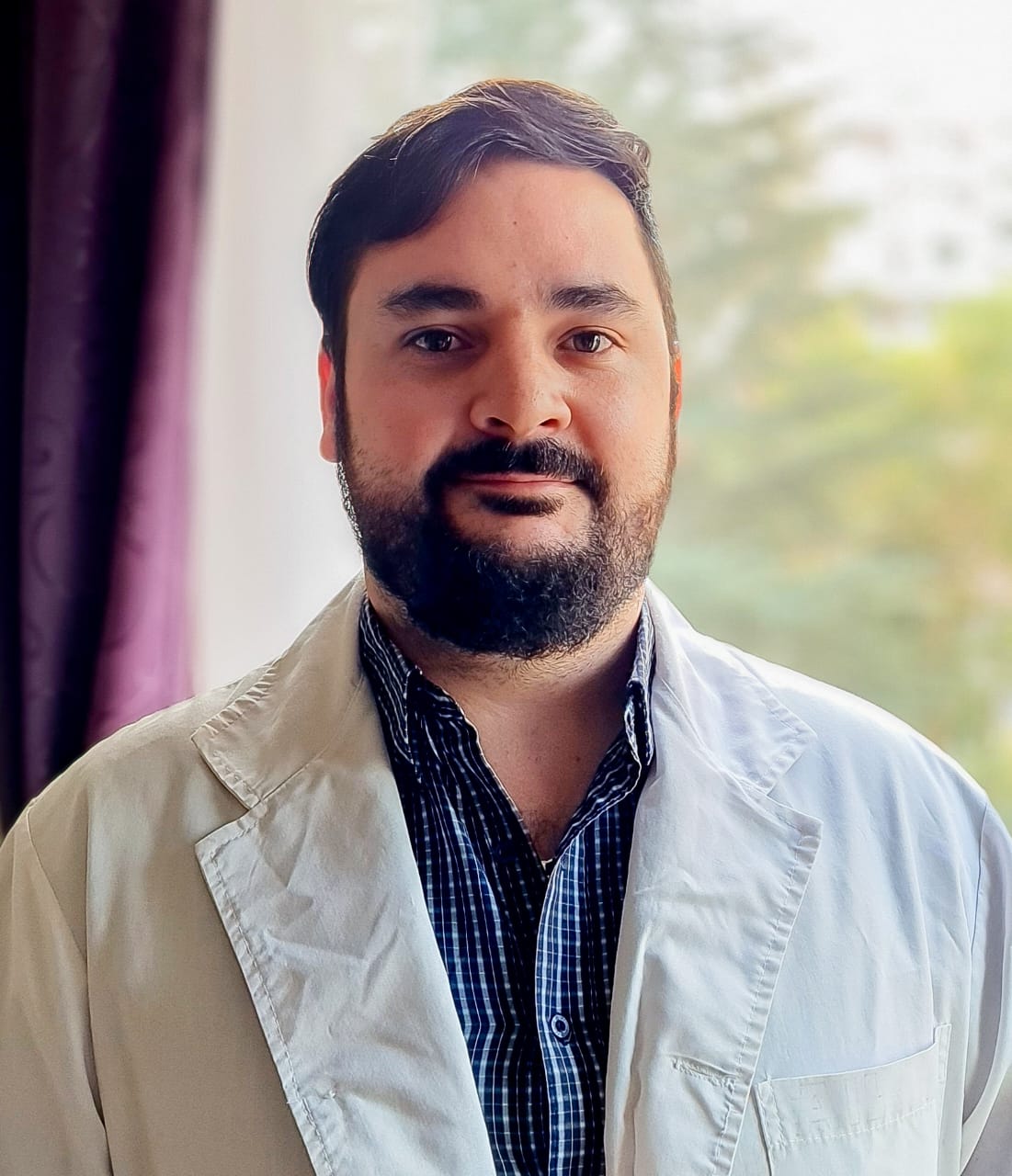
Tell us a little about your EV research, what attracted you to this field and any obstacles to progress?
During my doctoral thesis, at Cancer Cell Biology Lab at Universidad San Sebastian in Chile of Dr Manuel Varas-Godoy, we wanted to understand if the overexpression of CXCR1 in response to IL-8 could be inducing EVs with a protumorigenic profile. We observed that EVs, from ovarian cancer cells overexpressing CXCR1 and stimulated with IL-8, induced tube formation, permeability, and cell-cell adhesion in vitro and new blood vessels in a chicken chorioallantoic membrane (CAM) model in vivo, similar to the positive control VEGF.
The EV field caught my attention at the beginning of my career, at that time I was working in a spin-off company in which we wanted to use EVs as a biomarker for acute kidney injury, and since then, I have not stopped working in the field of EVs. Nevertheless, working with EVs is always challenging, due to the difficult process of obtaining a large enough quantity to carry out the experiments required to test their function.
Why did you join ISEV and what are your thoughts on how ISEV might help you to address any challenges?
I joined ISEV because it is the worldwide reference entity in the extracellular vesicle area. Also, ISEV membership is important in increasing awareness of the latest publications in relation to EVs, information regarding meetings (ISEV annual meeting), e-Learning courses and having a community of members that can help in Q&A regarding processes related to EVs investigation.
In addition, ISEV serves as a window to show the work done by different researchers around the world and in my case, show the work in the ISEV annual meeting 2022 performed during my thesis period, and the work done in Dr Manuel Varas-Godoy’s laboratory. In the future I hope to be a more participative member of this organization.
In what way have collaborations with other groups or with industry impacted on your EV studies?
Collaborating with other groups is important, because one can share knowledge, new techniques, or assays for example, in our research we did not have all the assays set up in our laboratory such as the CAM assay, therefore, collaboration helped us determine the effect of the EVs in this in vivo model, from which we obtained important information regarding the EVs generated in our conditions.
Do you plan to continue with EV research in the future and if so, what questions would you like to pursue?
Yes, I intend to continue my career in the world of EVs in the context of my postdoc, I will perform my postdoc in the group of Viktorsson, Lewensohn & Ekman, in which I will be working in translational lung cancer research at the Dep. of Oncology and Pathology at the Karolinska Institutet. In this next stage, I will be evaluating samples from plasma and pleural effusion to evaluate the expression of possible biomarkers associated with lung cancer resistance and the effect of radiotherapy on released EVs, and in an in vitro model how these EVs could influence the crosstalk between different cell types and contribute to tumor progression.
What do you think is the most exciting thing in the future of EVs?
I believe that in the future extracellular vesicles will be closely linked to personalized therapies, since it will be possible to determine the type of pathology in a non-invasively manner, or the stage in which it is found and, furthermore, the EVs will be used as carriers to deliver medicines more precisely and effectively.
How do you see your career progressing over the next five to ten years?
My desire and main challenge is to contribute to science with a translational approach in the world of oncology, and in the advancement of biomarkers discovery from liquid biopsies. This would be very important since it would be possible to evaluate the progression of the disease, or the tumor recession mediated by drugs and generate a better quality of the patients who are suffering from this disease.
August 2022 Member Spotlight
Maarten Bebelman
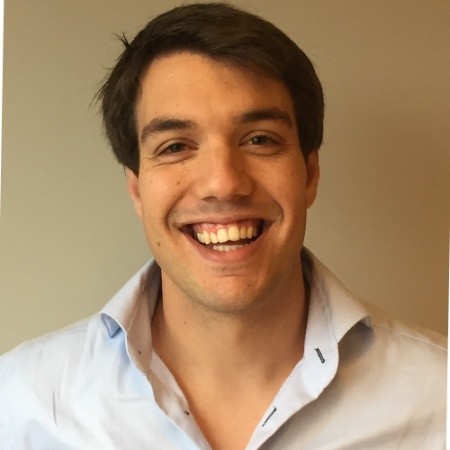
Tell us a little about your EV research, what attracted you to this field and any obstacles to progress?
I performed my PhD research in the lab of Michiel Pegtel, where I studied EV biogenesis mechanisms with a focus on MVB-derived exosome secretion. In addition, I did part of my PhD research in the receptor pharmacology lab of Martine Smit at the VU University Amsterdam. This collaboration allowed me to study how G protein-coupled receptor signalling can influence exosome secretion, but also how these receptors can be secreted on EVs themselves.
Research into the mechanisms of EV biogenesis is challenging because of the difficulties in isolating and quantifying EVs. Studying EV secretion therefore requires a lot of creativity and the development of new research tools, such as CD63-pHluorin and NanoLuc-CD63.
Why did you join ISEV and what are your thoughts on how ISEV might help you to address any challenges?
I joined ISEV in 2016 in order to participate in the ISEV2016 conference in Rotterdam. That conference was a lot of fun and really gave me a good overview of EV research at the time. In my opinion the ISEV meetings and the education days are a great way to introduce new researchers to the field.
In what way have collaborations with other groups or with industry impacted on your EV studies?
Collaborations with other groups within and outside of the EV field have been crucial for my PhD projects. During my PhD I got the opportunity to work in the lab of Guillaume van Niel in Paris for six months. It was an amazing experience and resulted in invaluable data for my PhD project.
Do you plan to continue with EV research in the future and if so, what questions would you like to pursue?
Currently, I am doing a postdoc in the lab of Marino Zerial in Dresden, where I take a break from EV research and try to learn about other research areas, such as developmental biology and biophysics. However, I remain very much fascinated by EVs, and I think there is still a tremendous amount of cool work to do in the EV field. I therefore hope that I can return to EV research in some way in the future.
What do you think is the most exciting thing in the future of EVs?
Our knowledge of the mechanisms of EV biogenesis has really improved in the last years, and we are moving towards a point where it is possible to selectively inhibit the secretion of EV subpopulations. If we can selectively block the secretion of EVs from specific cells or tissues in vivo, it will really boost our understanding of the role of EVs in physiology and disease.
How do you see your career progressing over the next five to ten years?
I would like to use the coming years as a postdoc to broaden my scope and learn as much as I can from other research fields. Then, if I get the chance, I would like to start my own lab and perhaps return to EV research.
Katherine White
Tell us a little about your EV research, what attracted you to this field and any obstacles to progress?
I am currently starting the final year of my PhD investigating astrocyte extracellular vesicles in health and disease. My work so far has focused on creating a ‘healthy’ and a ‘reactive’ astrocyte model in human cells by removing/adding serum and comparing their EVs, particularly using mass spectrometry to investigate proteomic differences. In my final year we are hoping to look at the functionality of these EVs.
My interest in neurodegeneration led me to the EV field and the idea of EVs as a mechanism of disease transmission. Then after working with EVs, I decided I wanted EVs to be the focus of my research. A major obstacle which still hampers my area of research is the lack of cell-specific biomarkers which can be used to separate brain-derived EVs, especially differences between EV subtypes. Using EVs for disease diagnostics would be a major development for patients and neurodegeneration research.
Why did you join ISEV and what are your thoughts on how ISEV might help you to address any challenges?
ISEV is a great society with such a friendly and interactive community which has been so helpful as an early career researcher. I attended ISEV2020 whilst in the first year of my PhD where I learnt so much about the general EV field, particularly through the education day and learning the challenges other groups were trying to address. Even virtually, everyone was so eager to help others and suggest different techniques to try and overcome challenges. As well as the ISEV events, the MISEV guidelines have helped guide my research to ensure I am producing good quality work and going forward, will help design my experiments when exploring new techniques.
In what way have collaborations with other groups or with industry impacted on your EV studies?
Working with other groups within our university has allowed me to learn and access a range of techniques to characterise my EVs as suggested in the MISEV guidelines. In particular, our SLIM department has allowed me access electron microscopy and dSTORM imaging with experts helping with these difficult techniques. As well as collaborating within the university, working with proteomic facilities at Nottingham Trent university and the Cambridge proteomics core centre has allowed me to create proteomic databases using different mass spectrometry methods in the hopes of finding biomarkers for our models which we could investigate further.
Do you plan to continue with EV research in the future and if so, what questions would you like to pursue? How do you see your career progressing over the next five to ten years?
After completing my PhD, I would love to continue to work on brain-derived EVs and in particular, their role in neurodegeneration. I still find the idea of EVs as propagators of disease fascinating and I would like to investigate this further as well as potential biomarkers of disease. I feel that the skills I have learnt as an EV researcher has helped me be confident when tackling new techniques and challenges so this will help me be a better scientist going forward. I would like to complete a couple of post-doctorate positions over the next few years before trying to establish my own niche research area within the next ten years.
What do you think is the most exciting thing in the future of EVs?
In my field, the most exciting future is the potential for EVs to be used in diagnostics for neurodegenerative disease. At present, it takes a long time for patients to be diagnosed with their disease and therefore, they are losing out on months of possible preventative treatments. It is also difficult to confirm an accurate diagnosis whilst the patients are alive which hinders clinical trials for potential new treatments, particularly for conditions where symptoms are quite general such as dementia. If biomarkers are identified for disease, this could lead to far more success in drug development and one day a treatment for these diseases.
|


 Tell us a little about your EV research, what attracted you to this field and what are the biggest obstacles to your EV research? What are your thoughts on how ISEV might help to address any challenges? Progress?
Tell us a little about your EV research, what attracted you to this field and what are the biggest obstacles to your EV research? What are your thoughts on how ISEV might help to address any challenges? Progress?  Tell us a little about your EV research, what attracted you to this field and any obstacles to progress?
Tell us a little about your EV research, what attracted you to this field and any obstacles to progress?  Tell us a little about your EV research, what attracted you to this field and any obstacles to progress?
Tell us a little about your EV research, what attracted you to this field and any obstacles to progress?  Tell us a little about your EV research, what attracted you to this field and any obstacles to progress?
Tell us a little about your EV research, what attracted you to this field and any obstacles to progress?  Tell us a little about your EV research, what attracted you to this field and any obstacles to progress?
Tell us a little about your EV research, what attracted you to this field and any obstacles to progress?  Tell us a little about your EV research, what attracted you to this field and any obstacles to progress?
Tell us a little about your EV research, what attracted you to this field and any obstacles to progress?  Tell us a little about your EV research, what attracted you to this field and any obstacles to progress?
Tell us a little about your EV research, what attracted you to this field and any obstacles to progress?  Tell us a little about your EV research, what attracted you to this field and any obstacles to progress?
Tell us a little about your EV research, what attracted you to this field and any obstacles to progress?  Tell us a little about your EV research, what attracted you to this field and any obstacles to progress?
Tell us a little about your EV research, what attracted you to this field and any obstacles to progress?  Tell us a little about your EV research, what attracted you to this field and any obstacles to progress?
Tell us a little about your EV research, what attracted you to this field and any obstacles to progress?  Tell us a little about your EV research, what attracted you to this field and any obstacles to progress?
Tell us a little about your EV research, what attracted you to this field and any obstacles to progress?  Tell us a little about your EV research, what attracted you to this field and any obstacles to progress?
Tell us a little about your EV research, what attracted you to this field and any obstacles to progress?  Tell us a little about your EV research, what attracted you to this field and any obstacles to progress?
Tell us a little about your EV research, what attracted you to this field and any obstacles to progress?  Tell us a little about your EV research, what attracted you to this field and any obstacles to progress?
Tell us a little about your EV research, what attracted you to this field and any obstacles to progress?  Tell us a little about your EV research and what attracted you to this field.
Tell us a little about your EV research and what attracted you to this field.  How did you discover the EV field and incorporate it into your research?
How did you discover the EV field and incorporate it into your research? How did you discover the EV field and incorporate it into your research?
How did you discover the EV field and incorporate it into your research? How did you discover the EV field and incorporate it into your research?
How did you discover the EV field and incorporate it into your research? How did you discover the EV field and incorporate it into your research?
How did you discover the EV field and incorporate it into your research? How did you discover the EV field and incorporate it into your research?
How did you discover the EV field and incorporate it into your research?
 How did you discover the EV field and incorporate it into your research?
How did you discover the EV field and incorporate it into your research? Tell us a little about your EV research, what attracted you to this field and any obstacles to progress?
Tell us a little about your EV research, what attracted you to this field and any obstacles to progress?  Tell us a little about your EV research, what attracted you to this field and any obstacles to progress?
Tell us a little about your EV research, what attracted you to this field and any obstacles to progress?  Tell us a little about your EV research, what attracted you to this field and any obstacles to progress?
Tell us a little about your EV research, what attracted you to this field and any obstacles to progress?  Tell us a little about your EV research, what attracted you to this field and any obstacles to progress?
Tell us a little about your EV research, what attracted you to this field and any obstacles to progress? 

